Eat Know Love Istria: New Edition Reveals Why Istria is Top Gourmet Destination
April 13, 2022 - The new issue of the gourmet magazine Eat Know Love Istria is out exploring stories, experiences, and the heritage of beautiful Istria, all through one of life's greatest joys - food.
Although many call it a hidden gem, Istria has long been recognized around the world for its enticing natural beauty, rich cultural heritage, and excellent gourmet offer that combines modern and traditional in a unique way, providing an exceptional experience to all who find themselves there. Today, this green oasis of playful experiences is, quite deservedly, at the very top of the world's gourmet locations, and research shows that every third guest visits Istria for the smell and taste of traditional local cuisine.
The new issue of the gourmet magazine Eat Know Love Istria brings stories about this magical land of giants and unforgettable gourmet pleasures, and continues to reveal many Istrian attractions and well-hidden secrets, told through customs related to the rich tradition woven around this area. A special treasure lies in the traditions that have been shaped throughout history and still live today as part of the charm in the everyday lives of the local population. One of the best ways to discover this daily is to eat.
Istrian cuisine originates from the sea, millennial olives, and the heritage of vines, wild plants and medicinal herbs, domestic animals, and many fish, which according to the old proverb, once done with the sea should swim in olive oil and wine. The gold of Istria, its extra virgin olive oil is the base of almost every dish in this area, a symbol of quality and true pleasure at the table, and in recent years has won the world's most prestigious awards.
"Istria is simply magical - almost like the perfect film set with a sense of timelessness and at the same time mystery in all its traditional beauty. In fact, Istria is so special, different, that just watching the sunset will instantly fill you with positive emotions and make you aware that you are just enjoying a region that is the best example of the romantic Mediterranean! Istria is my eternal inspiration for everything I do, and only a part of everything that Istria represents can be found in the new gourmet magazine Eat Know Love Istria", said the editor Zorica Bocić, who does not hide her fascination with Istria and love for everything she does to promote the Istrian region.
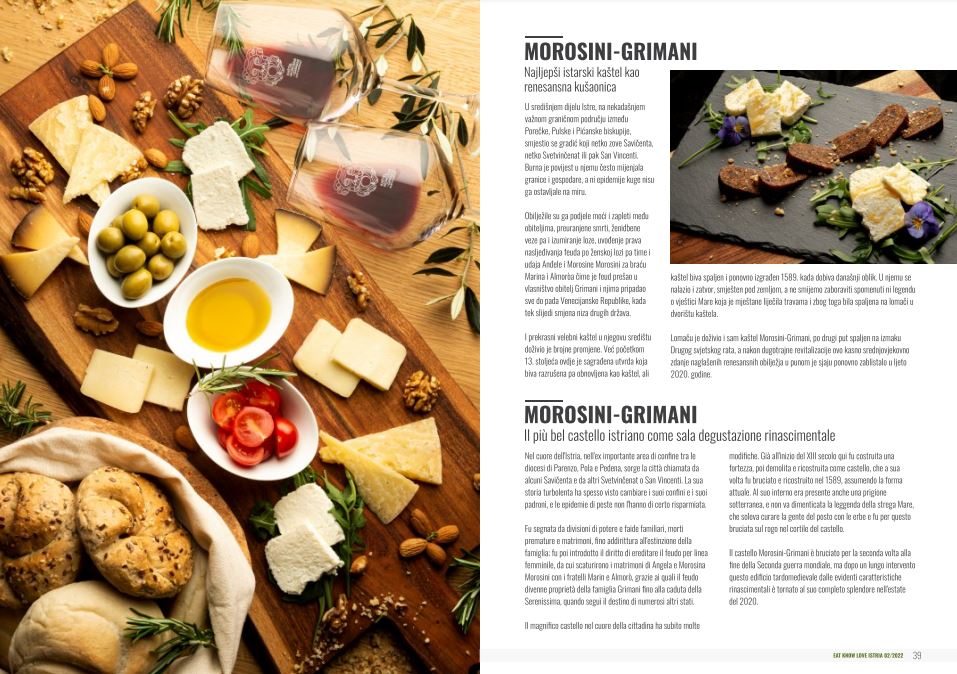 The gourmet magazine, a result of the cooperation between the tourist company Maistra and the tourist boards of Rovinj, Vrsar, Bale, Kanfanar, and Svetvinčenat, as well as the Association of Craftsmen Rovinj, presents many traditional recipes that nurture Istrian cuisine and celebrate the history and tradition of this region. Famous Istrian prosciutto and aromatic cheese, organic fruits and vegetables from the fertile Istrian crljenica, freshly caught fish from the clear Adriatic, wines from sunny vineyards on the slopes of fairytale hills. These are the original elements of Istria that the producers and caterers combine into a colourful and recognizable eno-gourmet mosaic. It is a combination of the products of the Istrian country and the hardworking hands of the hosts who have been slowly but unstoppably climbing the ladder of success for decades.
The gourmet magazine, a result of the cooperation between the tourist company Maistra and the tourist boards of Rovinj, Vrsar, Bale, Kanfanar, and Svetvinčenat, as well as the Association of Craftsmen Rovinj, presents many traditional recipes that nurture Istrian cuisine and celebrate the history and tradition of this region. Famous Istrian prosciutto and aromatic cheese, organic fruits and vegetables from the fertile Istrian crljenica, freshly caught fish from the clear Adriatic, wines from sunny vineyards on the slopes of fairytale hills. These are the original elements of Istria that the producers and caterers combine into a colourful and recognizable eno-gourmet mosaic. It is a combination of the products of the Istrian country and the hardworking hands of the hosts who have been slowly but unstoppably climbing the ladder of success for decades.
We can also discover many interesting events that attract more and more visitors to Istria every year and gather only the best of the best from the world and domestic gourmet scene. For those who are curious, the magazine contains stories and legends of the Istrian region, as well as a small dictionary of the Istrian dialect so that they can fully indulge in this unique experience. While traveling in Istria, every road and turn will surely take you on a new gourmet adventure, related to the history and culture of this region.
The magazine is available at the link: https://infovrsar.com/media/ddvot15s/eat-love-know-hr-it-web.pdf, and can also be found on the tourist boards of Rovinj, Vrsar, Bale, Kanfanar, and Svetvinčenat.
For more, check out our lifestyle section.
Tourist Boards in Zagreb County Develop Gourmet and Cultural Tourism
January 19, 2021 – Tourist boards in Zagreb County are uniting in two projects – to develop and promote cultural and gourmet tourism.
The new Law on Tourist Boards and the Promotion of Croatian Tourism encourage the tourist boards' association, both project-wise and formally. Local and regional tourist boards, as well as tourist boards and local self-government units that do not have an established tourist board for their area, may join a project (agreement) association.
Many tourist boards have already taken advantage of this opportunity, such as the Zadar Archipelago and Southern Istria tourist boards, and more recently, the tourist boards in Zagreb County.
Namely, they unite to promote and develop cultural and gourmet tourism. As the Zagreb County Tourist Board director Ivana Alilović points out, their goal is to intensively promote the Zagreb Green Ring region and existing tourist products and programs.

Scene from Zagreb County / Romeo Ibrišević, Zagreb County Tourist Board
"Our goal is integrated quality management of the Zagreb County's tourist destination product, which will reduce the gap between the level of quality that tourists expect and the level of quality that the destination can provide and deliver. Also, we want to improve the quality and content of Zagreb County tourism product, increase tourist satisfaction and tourist spending in Zagreb County and the benefits for entrepreneurship in catering and tourism," says Alilović.
Gourmet tourism in Zagreb County
Local tourist boards of Jastrebarsko, Samobor, and Sveti Ivan Zelina cities have concluded an agreement on the local Zagreb County Tourist Boards' association. In this first project, the joint activity will be the development of gourmet tourism. Wine roads and cheese roads are among the many tourist attractions of rural, eno, and gastro tourism of Zagreb County.
Vineyards and wine cellars in Zagreb County are located on three wine roads – Plešivica Wine Road, Zelina Wine Road, and Samobor Wine Road. Along wine roads, you can find Purtugizec Plešivica and Kraljevina Zelina wines from the Zagreb County brand, as well as Bermet, a traditional and widely recognized Samobor aromatized wine.
Also, there are wines produced from indigenous varieties Plavec yellow, sweet Zelenac, and Šipelj, and many other wines such as Chardonnay, Sauvignon, black, gray, and white Pinot, Rhine Riesling, Traminer, Frankovka, Škrlet, yellow Muscat, Šipon.
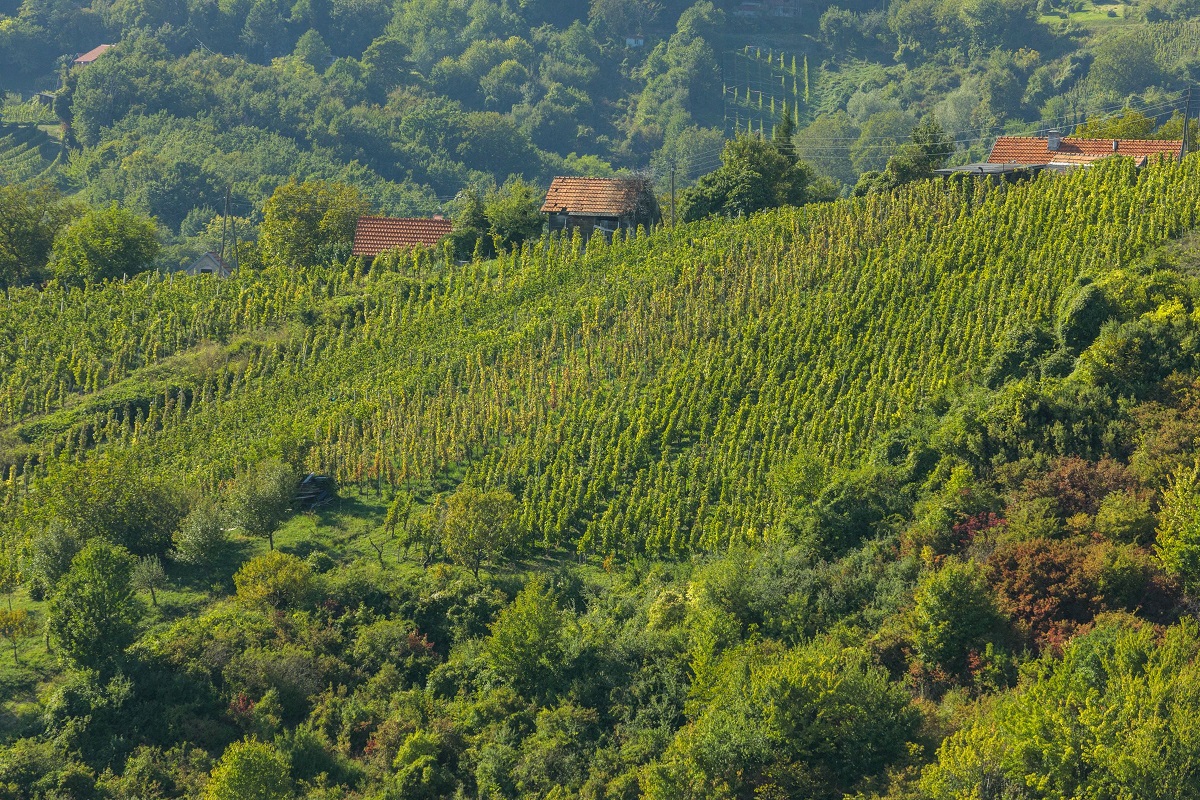
Vineyards in Jastrebarsko / Copyright Romulić and Stojčić
The main goals of the association through the gourmet tourism project are:
- The smart specialization of Zagreb County.
- The development of a tourist destination for gourmet tourism.
- Improving the value chain of gourmet tourism.
- Digitalization and application of new technologies.
- Multi-sector connectivity.
- Development of local production systems (Agri-food).
- Positioning and promotion of Zagreb county.
Cultural tourism in Zagreb County
Cultural tourism in Zagreb County is based on protected natural heritage and cultural and historical heritage. Zagreb County has a rich treasury of natural heritage and beauty. It has many protected natural areas, which contribute to the development and success of cultural, hiking, picnic, and sustainable tourism in Zagreb County.
The association project aims to establish a basis for the integrated management of cultural tourism. Alilović says they want to create a recognizable tourist destination product that will be the main instrument for encouraging tourism competitiveness in Zagreb County. She adds that cultural resources are the leading destination's product in the promotion of a tourist destination, and what makes one destination different from the other is its intangible cultural heritage.
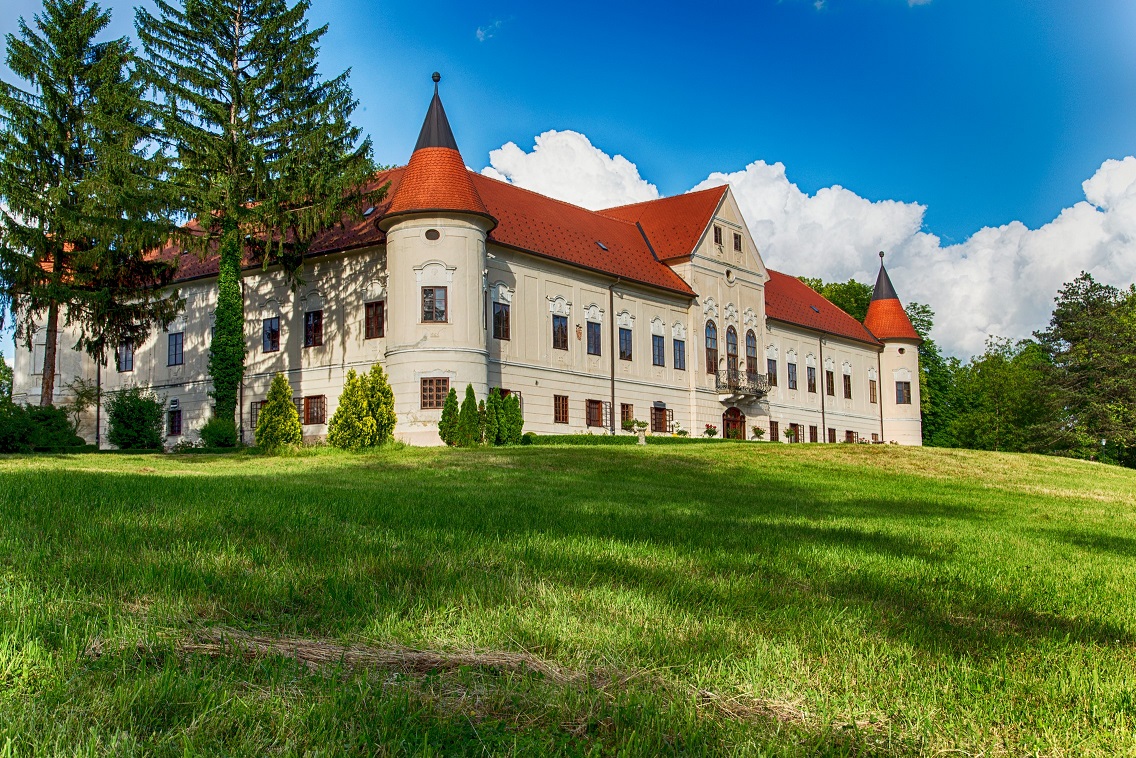
Lužnica Castle, Zaprešić / Zagreb County Tourist Board
"Heritage is the essential element by which a tourist destination's management attracts tourists to the destination. It is an attractive basis for branding. Creativity based on traditional intangible heritage thus pushes the boundaries of the mere functionality of a product.
Through the example of a cultural thematic route, we seek to show how myth can become a potential attractive basis for the development of mythological tourism in Zagreb County. The thematic route's stories and locations offer a choice according to criteria of collective and personal importance. Therefore, the thematic route is an open system that can be toured individually or organized with expert tourist guidance.
Special attention was given to the local identity. For example, the customs of St. George and St. John were highlighted, as well as other customs that are traditionally woven into the Zagreb County and surrounding regions," says Alilović.
The tourist offer of Zagreb County abounds in cultural and historical heritage, such as stories and legends, wooden construction, sacral construction, indigenous architecture, and archaeological finds and monuments of its rich past.
Zagreb County can also boast more than 200 cultural and historical heritage sites. Among them, castles Novi dvori Jelačićevi are a unique example of a complete manorial-economic complex preserved to this day. Then there are forts, manor houses, rich wooden sacral heritage, of which the most prominent is the chapel of St. Barbara in Velika Mlaka. A beautiful example of autochthonous secular architecture is the manor house (curia) Modić-Bedeković in Donja Lomnica. A special attraction is the memorial room of Alojzije Stepinac in Krašić.
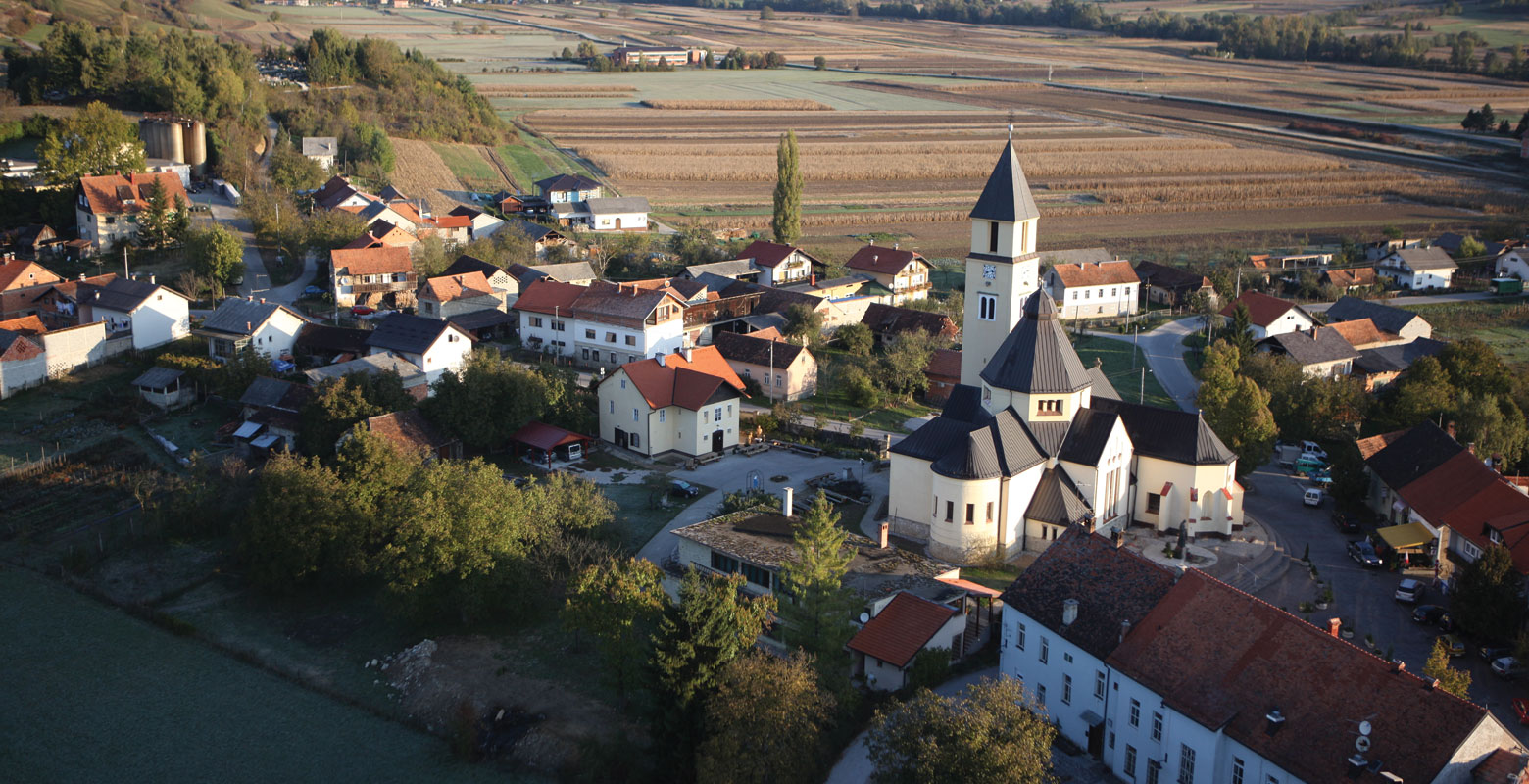
Krašić, Zagreb County / Zagreb County Tourist Board
Valuable is the archeological finds in Ščitarjevo, not far from Velika Gorica, and Budinjak (10th-6th centuries BC), one of the most important prehistoric archaeological sites in Croatia.
The project area includes the tourist boards of the cities of Zaprešić, Velika Gorica, Vrbovec, and Dugo Selo, the tourist boards of the municipalities of Pisarovina and Krašić, and the tourist board of area of the Sava-Sutla valley and hills.
"Agreements of project association in the Zagreb County Tourist Board are an example of planned activities. It is clear that the destination through joint action has the opportunity to better position itself in the market and develop projects that will stimulate overall economic development," said Alilović.
Alilović concludes that the association should result in numerous synergy effects. Not only in quality but also much-needed cost-effectiveness of promotion and project implementation.
For the latest travel info, bookmark our main travel info article, which is updated daily.
Read the Croatian Travel Update in your language - now available in 24 languages.
Join the Total Croatia Travel INFO Viber community.
International Cuisine In Zagreb: Pekinška Patka, international minimarket
September 20, 2020 - Continuing our series on Zagreb’s international food offer and the stories behind these cuisines and businesses. This time, international food market Pekinška Patka
My name is Josip and I'm Croatian by birth. We opened Pekinška Patka in 2013. There was a real lack of stores like this in Croatia. My partner Andrea and I were sick of working for other people. Andrea has been a vegetarian for a long time and she likes cooking. I like travelling and trying new foods, so we both had an interest in international foods. We're also both big music fans.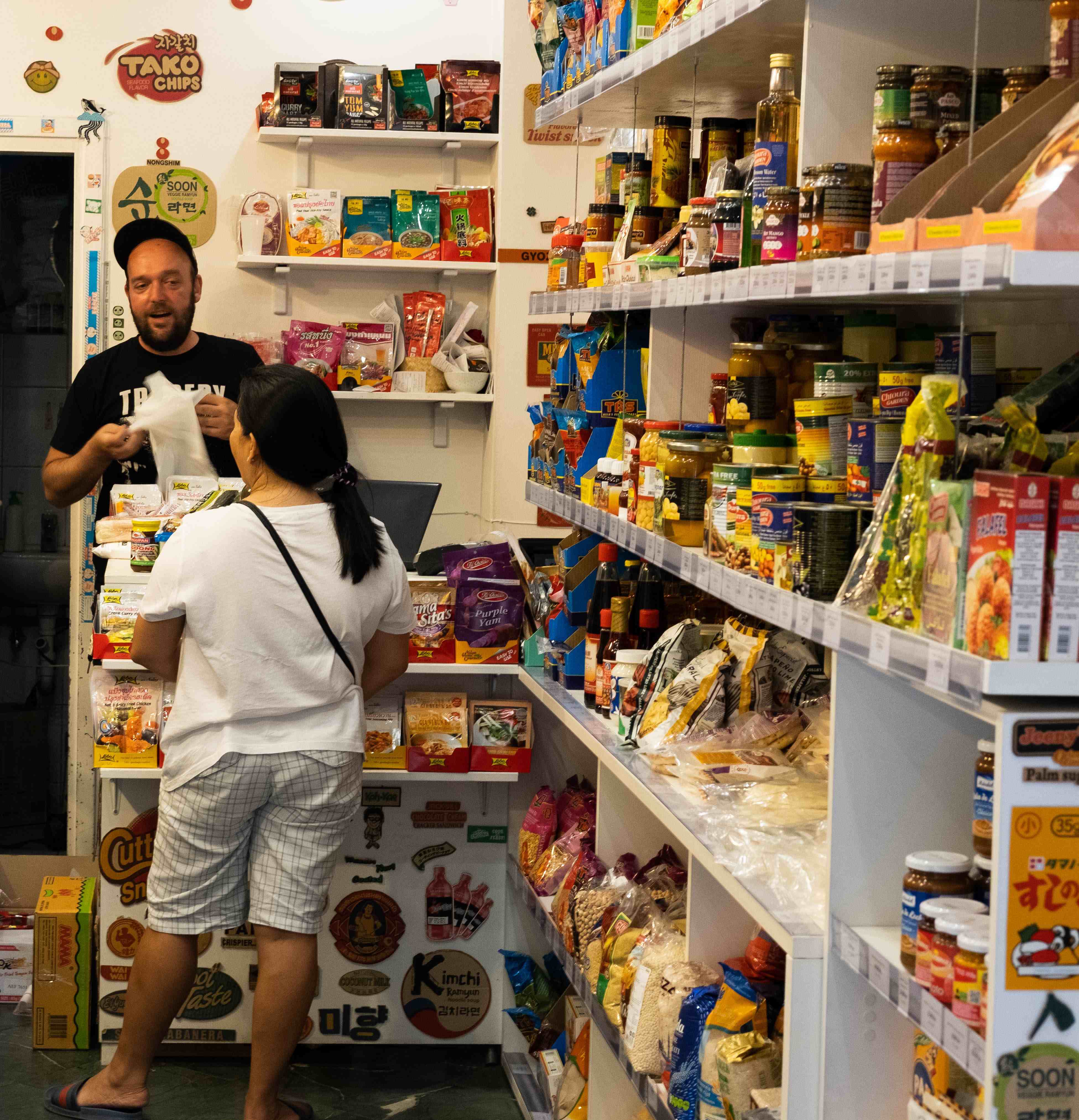
The first places I started travelling to were Greece and Turkey. I must have returned to those countries 10 times now. They really aren't so far from here and, when you go, there's something really similar about them, yet at the same time the cultures are very different (from here). Croatia is a mix of cultures, we have influences from there. In Istanbul, you can even find ćevapčići. The food is often very fresh, lots of vegetable dishes. They take great care over their food. For instance, if a guy does gyros in Greece, he takes great pride in what he does. The ingredients are always the best. It's a job probably he will do his whole life. People who do that job in other places, they don't have that sense. For them, it's just work.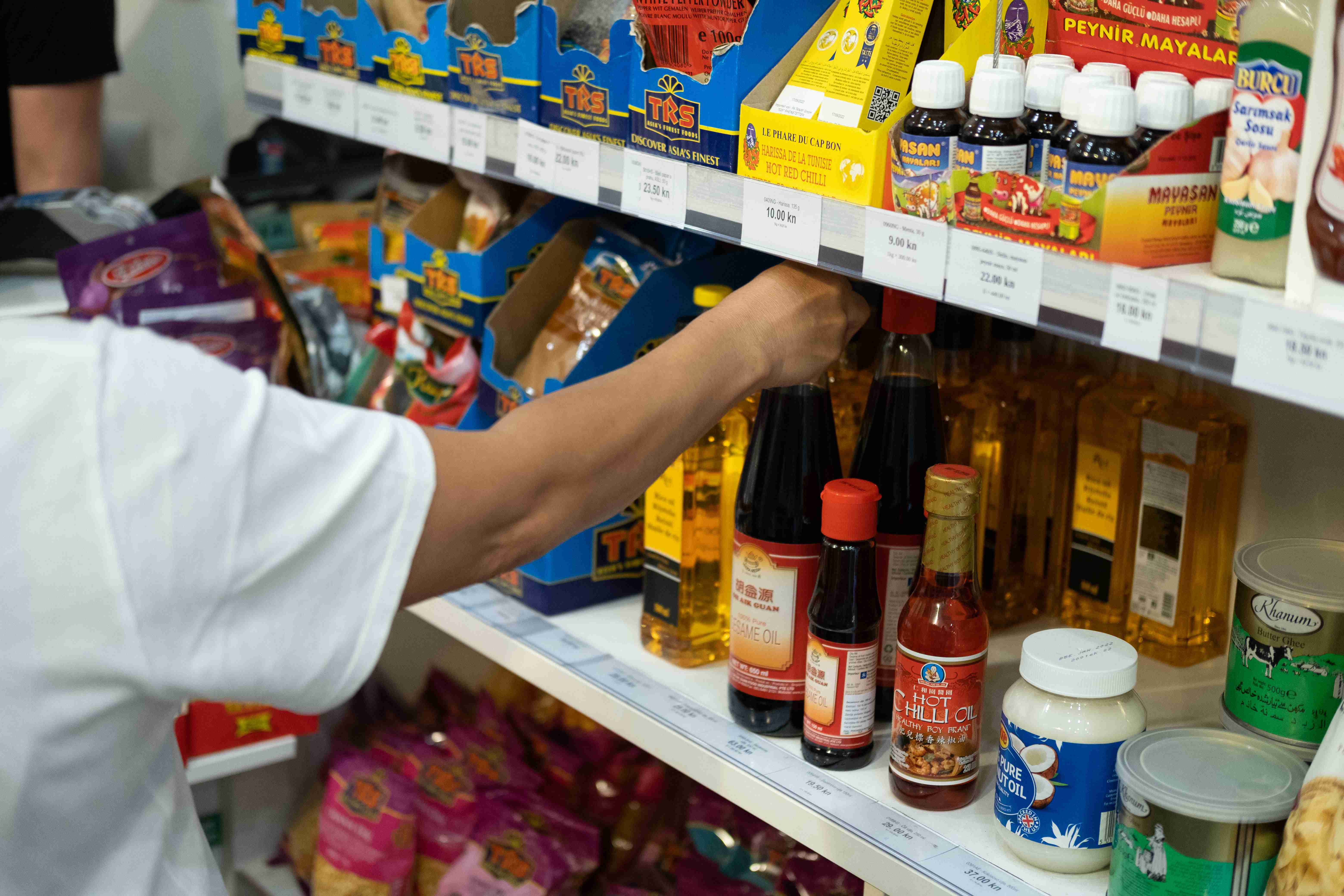
I visited Japan around 10 years ago for work. That was an excellent experience. I had plans for the first day I arrived, but they went out of the window. It was culture shock. I was there for around two weeks. I discovered ramen there. It was one of the easiest things for me to order. I ate sea urchins and onigiri. Everything was super tasty.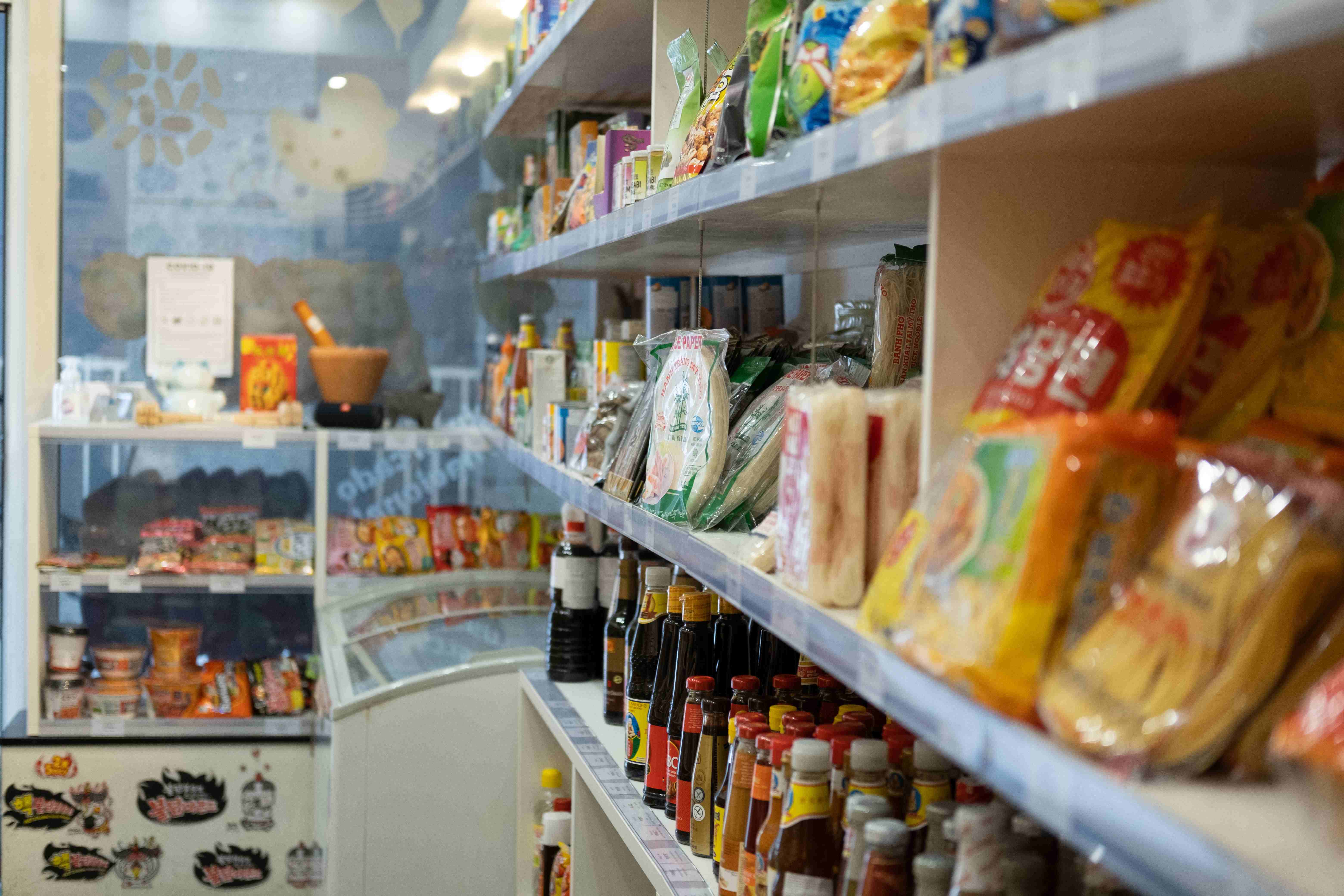
The stock in Pekinška Patka has been changing ever since we opened. We never used to have Mexican food. Now we have a whole shelf. And our Asian food range is now really big. We have foods and ingredients from India, the Middle East, Mexico, some from South America and also some West African basics like Egusi, Ogbono, Gari and Okra We try some things at home and if we want to promote them, we add them to the stock. Other new items come from customer requests.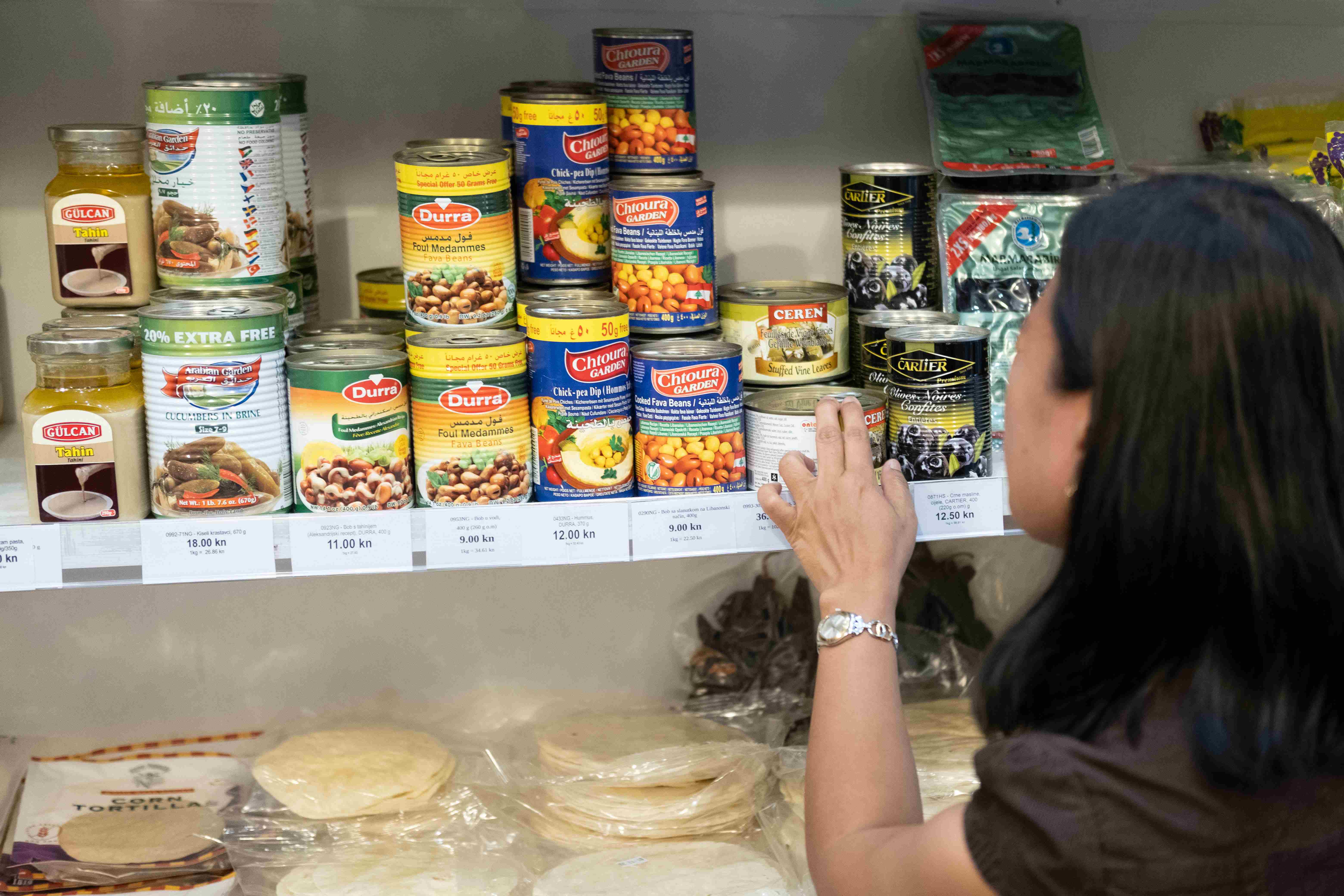
It's difficult to say what are the most popular things we sell. Everyone comes for different things. Filipino customers like to pick up ingredients for their tamarind soup - Sinigang. Some Croatians only come for noodles and Asian food, others only for Mexican or to buy spices. Most of our customers are Croatian, after that, lots of Filipino people come here, Israeli students, ex-pats and members of different Asian communities here in Zagreb. We like it most when families come in with their kids and you see that a child of maybe 10 years old is crazy about Asian food. When we were kids, it was impossible for our parents to bring us to a shop like Pekinška Patka. They didn't exist here back then.
Right on cue, TCN's chat with Josip was halted by two delightful Filipino ladies coming into the store. Regular customers of Pekinška Patka, they were only too happy to tell TCN what they like about the shop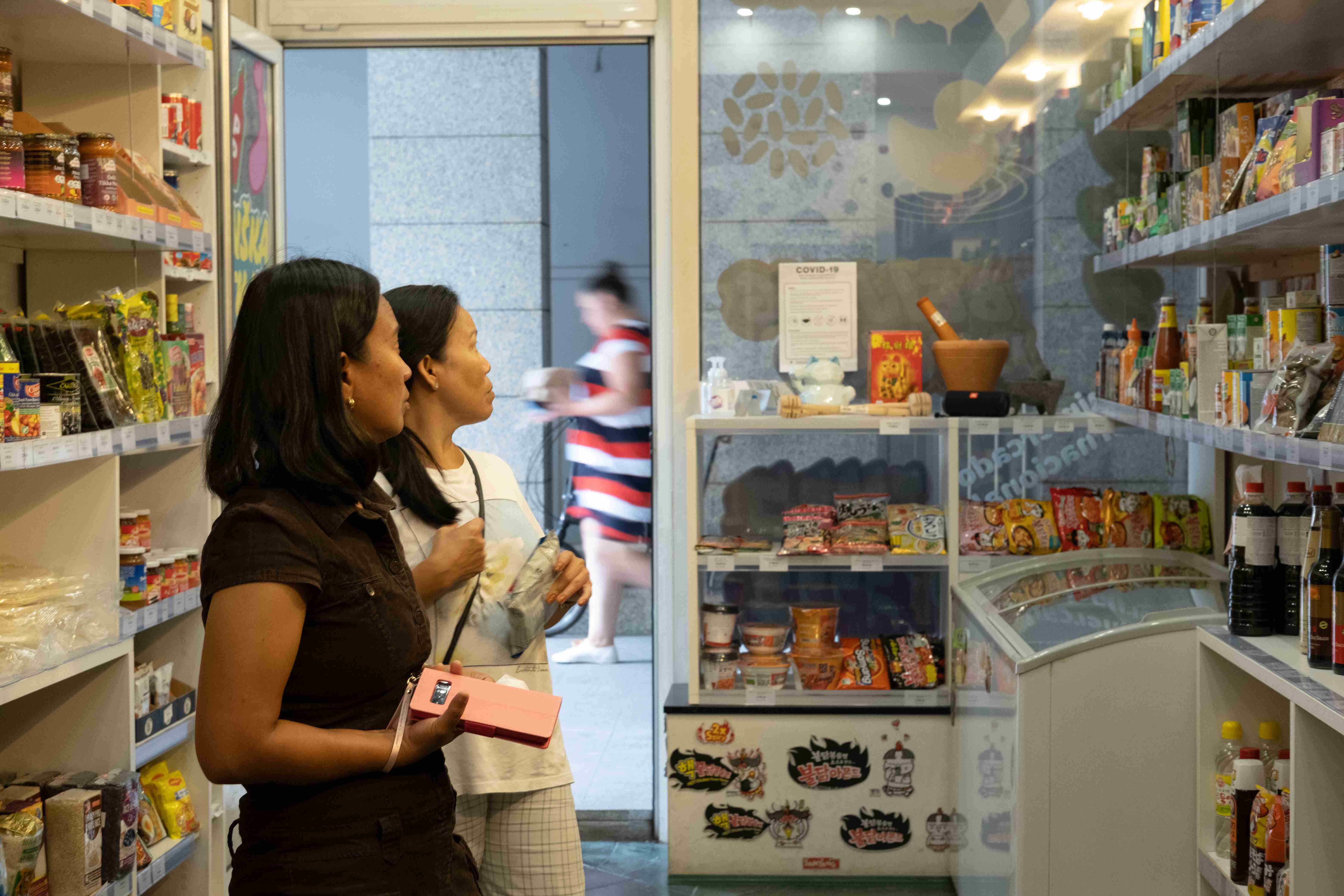
My name is Liezel and this is Marisol. We are from the Philippines. We discovered the shop on the internet maybe three months ago. We arrived in Croatia maybe one year ago. Life is much better since we discovered this store! We used to go to Metro, but it's far on the bus from where we live. They sell things here that we can't find in other supermarkets – good Oyster sauce, products we like from the Philippines, fish and snacks. The ingredients we buy here help us make some of our most famous national dishes, like pancit. You need special noodles to make it. Our Croatian friends are very curious about Filipino food. They love to try everything. And they like it, mostly.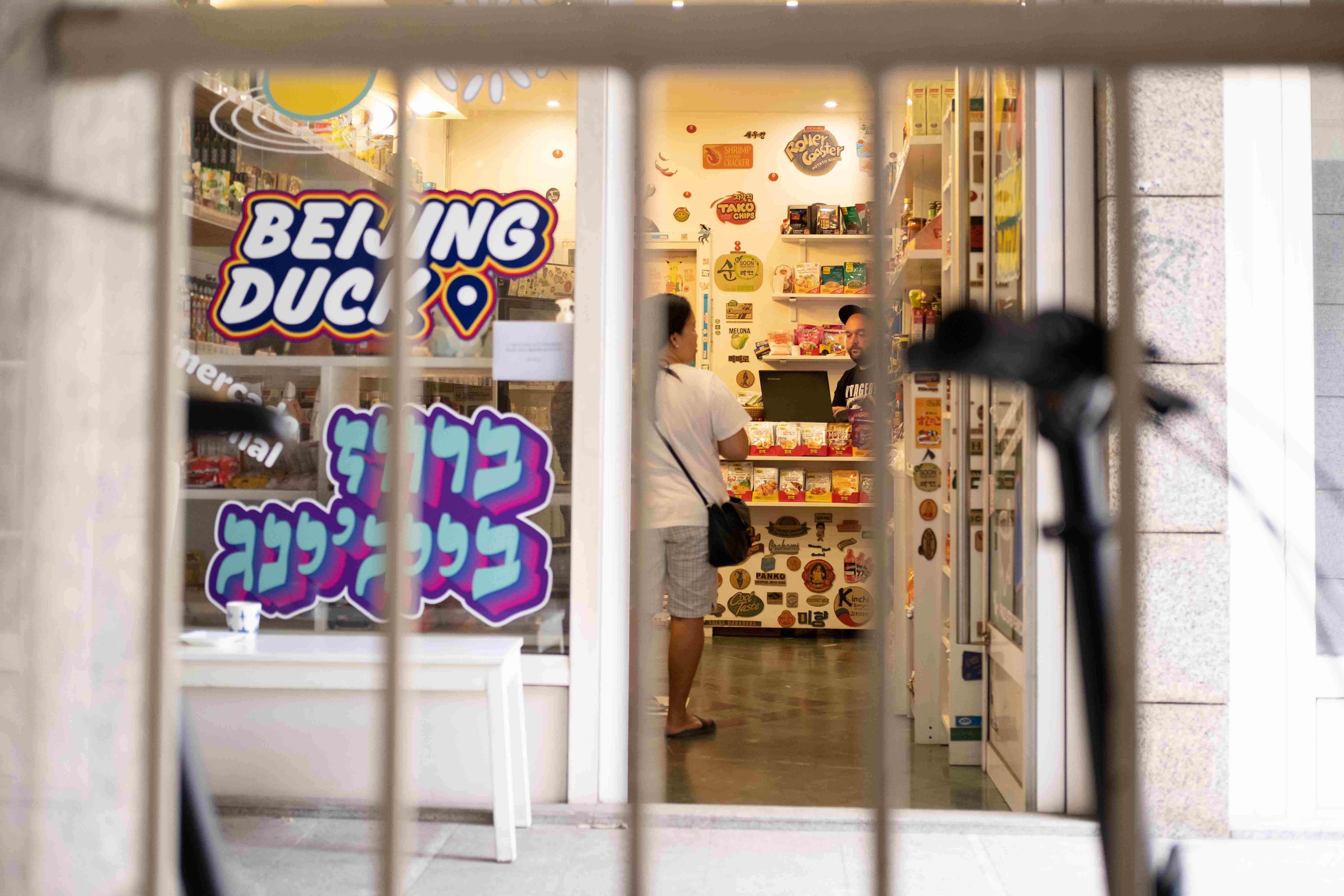
Josip: Regular Croatian customers usually get more adventurous over time. They like trying new things. And they ask for recommendations, which I'm always happy to give. I've tried almost everything in the shop. In our house, we always have Lao Gan Ma chilli oils from China, Mexican salsa verde, Petjel peanut sauce from Indonesia, which is very aromatic and Japanese mayo, which I recommend to anyone who likes mayo. It's really special.
You can visit Pekinška Patka at Vlaška 78
All photos © Mateo Henec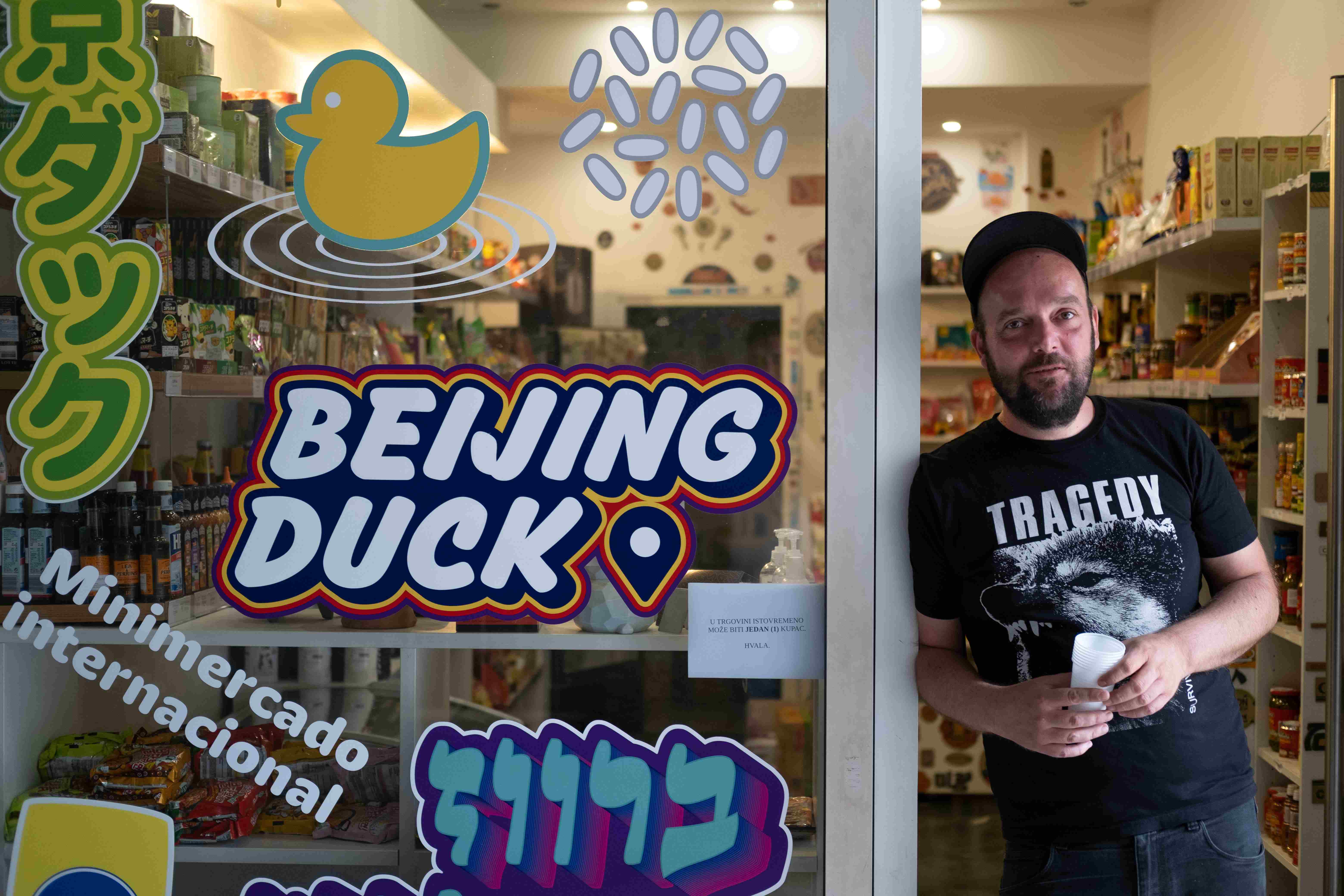
For the latest travel info, bookmark our main travel info article, which is updated daily.
Read the Croatian Travel Update in your language - now available in 24 languages
International Cuisine In Zagreb: Boršč, Pan-Slavic Food Specialists
September 15, 2020 - Continuing our series on Zagreb’s international food offer and the stories behind these cuisines and businesses. This time, Croatia's only pan-Slavic food specialists - Boršč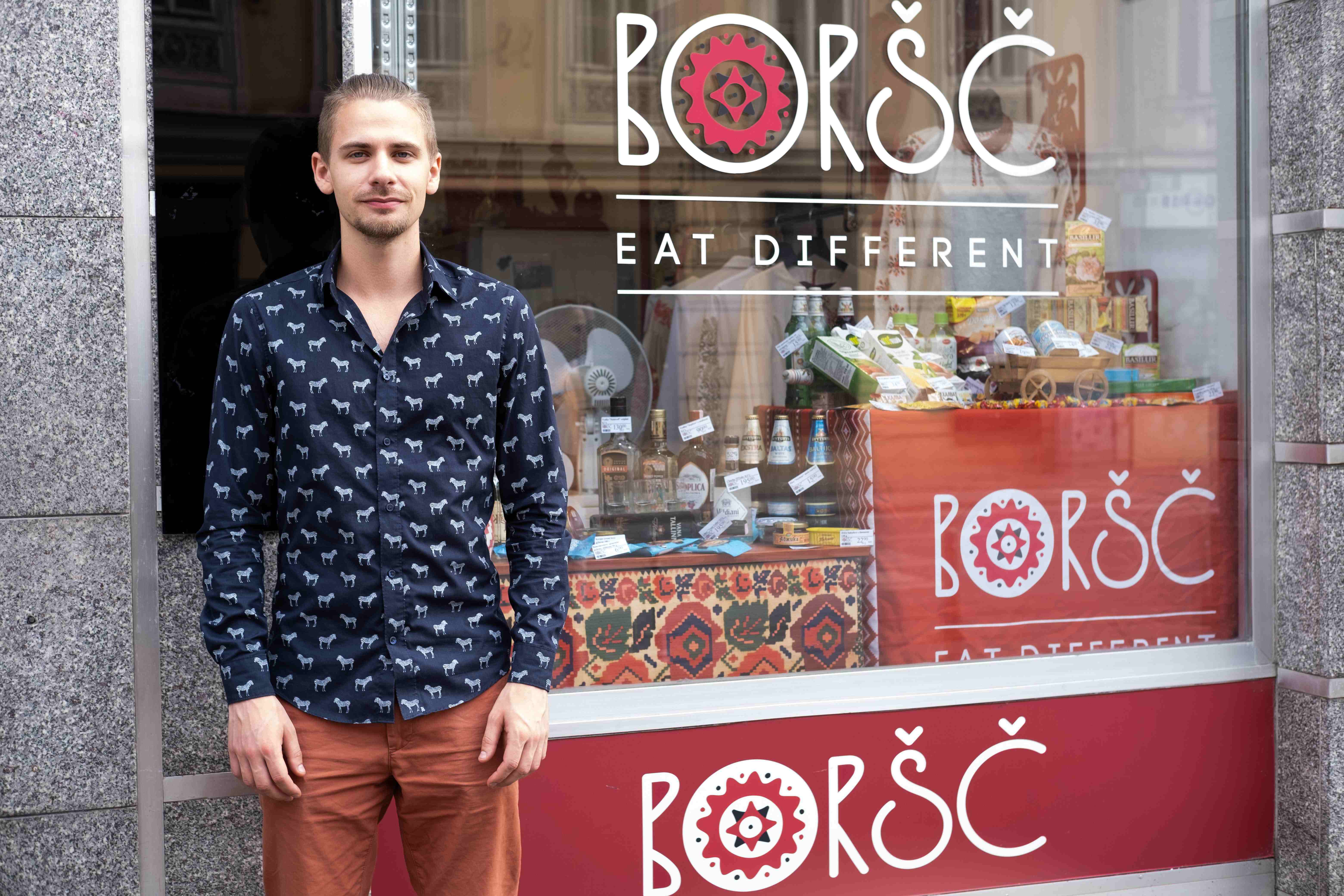
My name is Demian and I'm from Ukraine. My mother worked in Croatia, so I went to high school and to college here. She used to work in diplomacy. We moved around a lot. We went from Ukraine to Serbia, back to Ukraine, then to Croatia. Since coming here, aged around 15, I've been back to Ukraine only for visits – a month or two at maximum. Although I'm from western Ukraine, Lviv, a cultural town near the border with Poland, I also speak Russian and Croatian. And English. Apart from English, they're all Slavic languages, so you can find many words that have the same root. But, knowing both, I can say that the Russian and Croatian languages are really different from each other. Ukrainian is quite similar to Russian, although not as similar as some of the Balkan languages are to each other.
We opened Boršč four years ago. It started as a family business, me and my mum. We wanted to stock all the things we missed. Food and drinks from Ukraine, Poland, Russia, Estonia and Lithuania.
Ukrainian food is really not so sophisticated. Some dishes can take many hours to prepare and cook, but ingredients-wise, it's really not complicated. For instance, we have varenyky – the nearest thing you'd know them as is pierogi from Poland. They are traditional dumplings. You can fill them with anything you want. Cabbage. Potatoes, mushrooms. Potatoes and mushrooms. There are sweet versions with cherries or berries like strawberry. The savoury ones we usually fry in a pig fat which has some meat on it. It's a bit like Croatian čvarci, but softer and with more meat attached.
We have boršč. The recipe is a bit different to the Russian ones. Several countries lay claim to the soup. But, many do say that it is originally Ukrainian. Its name comes from a green plant which grows there, in wet areas, borschevik. The original boršč was green, not purple from beets. We still make the green one now, sometimes with different ingredients, and more often in summer. Sometimes it's completely vegetarian, other times it has meat and some people cook it using only vegetables and beef or pork bones.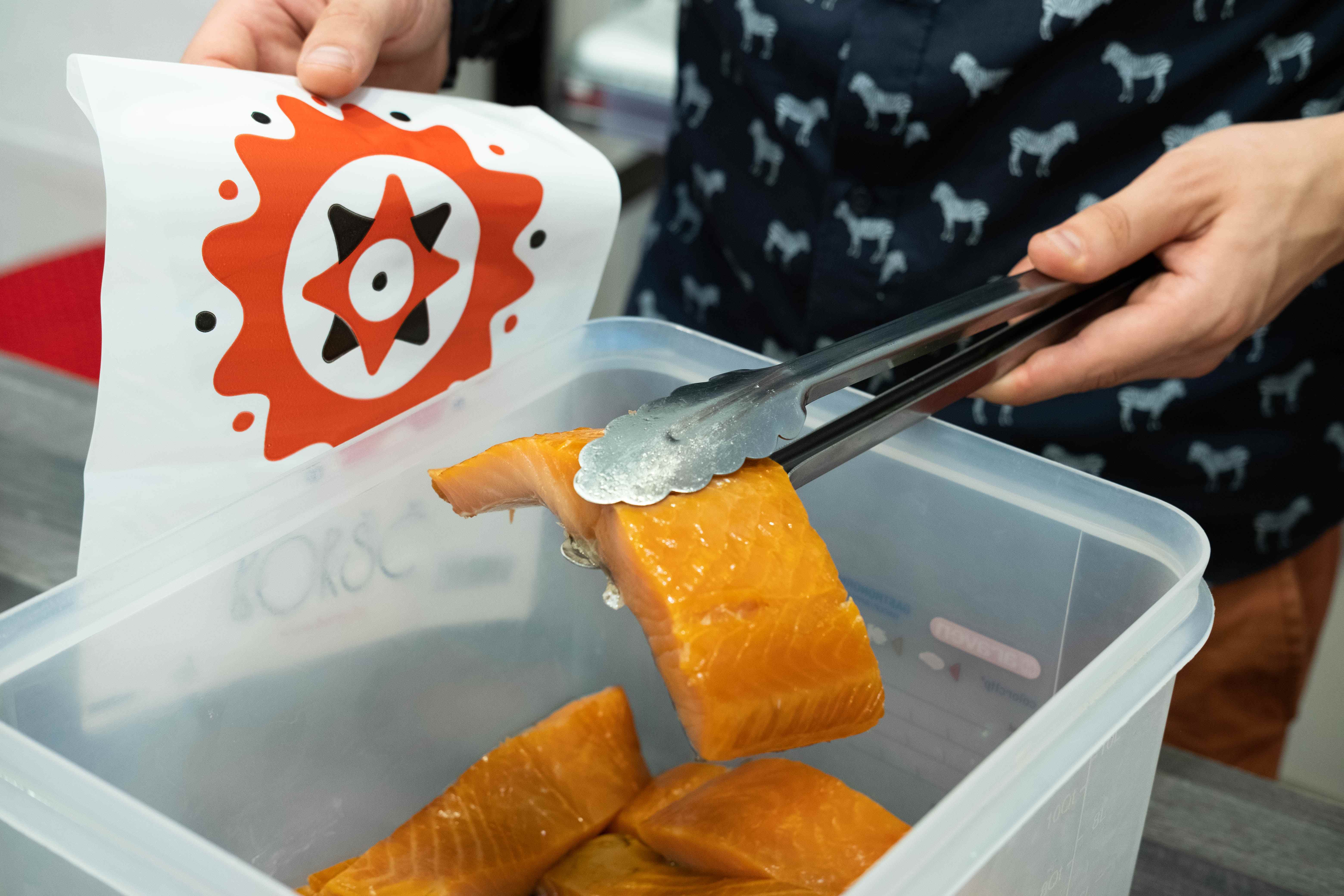
I've never come across a country more reliant on pig meat than Ukraine. If you think that Croatians eat a lot of pig, you should go to Ukraine! You have much more beef, veal and lamb in the Croatian diet. Those dishes you don't have regularly in the Ukrainian diet. We do eat chicken and, yes, there are some beef dishes. The fish we eat is completely different to that eaten in Croatian – ours comes from the Black sea, the Baltic or the North sea. The most popular is salmon. To be honest, I don't know the English names of the other fish, ha! I'm sure people in the UK have the same ones on their menu.
The climate in Ukraine can be tough. It's much colder there. Potatoes and cabbage grow well. In Croatia, you have beautiful tomatoes and green salad. You would not see that in Ukraine. But, our potatoes are the best. The land is very fertile, particularly in central Ukraine. It's good for growing.
In Boršč we sell several kinds of fish which are popular in Ukraine and Baltic countries – salmon, herring and trout. Our smoked salmon comes from the north sea. Almost everything in the shop comes from Europe, much of it from Norway, like the salmon, the red caviar, other fish. This salmon is actually smoked in the Netherlands. In Croatia, salmon is usually sliced thinly in the stores. They don't have the tradition like in northern countries to sell it in these styles of pieces. It's a really popular item in the store. We have caviar from the North sea, some from the Caspian sea. And we have salt cod – bakalar in Croatian - and cod liver, which is incredibly popular in Ukraine. It's considered a delicacy and is something of a national dish, often served on toast.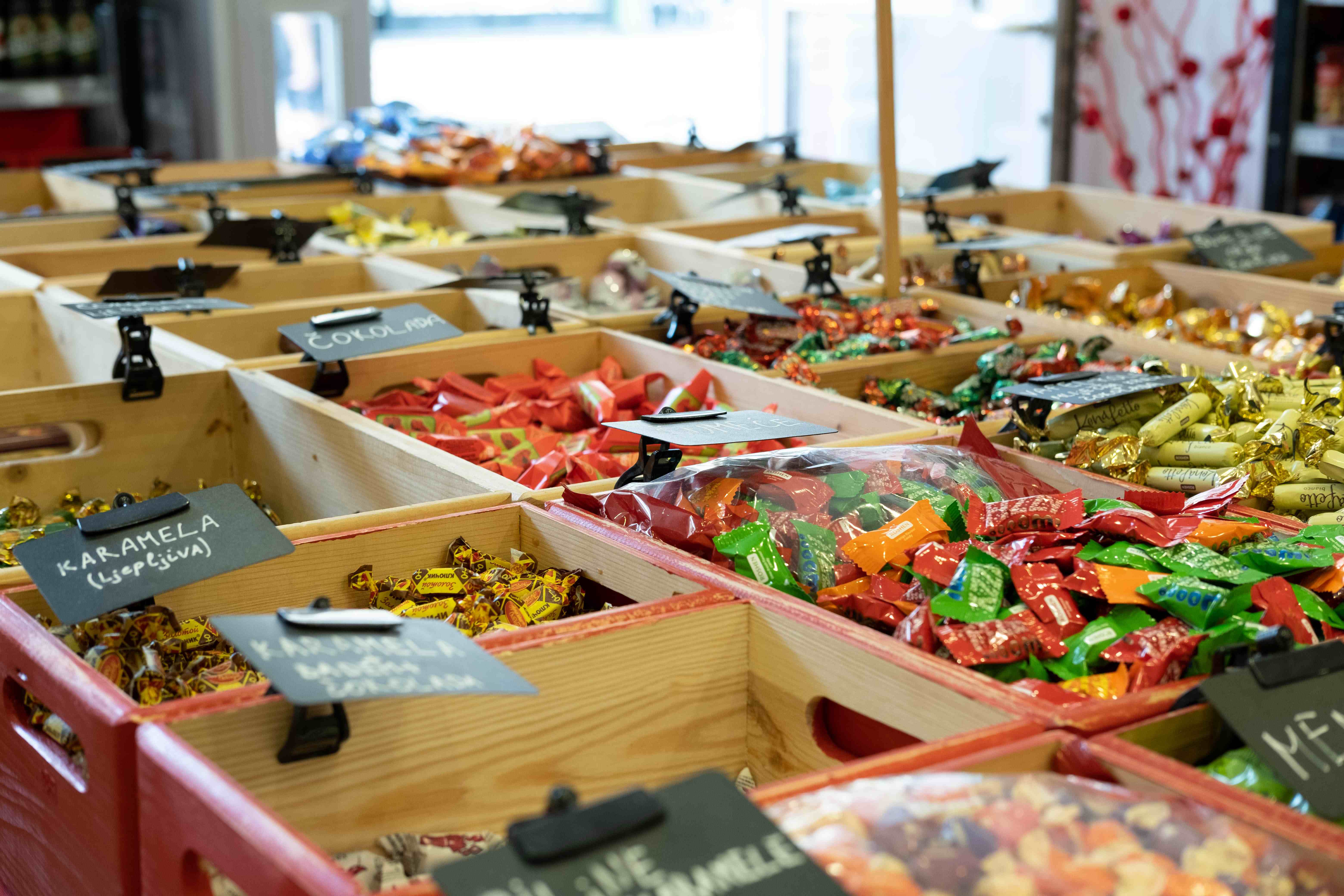 Chocolates from Russia, Ukraine and Poland were one of the biggest revelations TCN tried at Boršč - they were incredible! They have a higher content of (expensive) cocoa and less (cheap) sugar than most of the chocolates made in Croatia
Chocolates from Russia, Ukraine and Poland were one of the biggest revelations TCN tried at Boršč - they were incredible! They have a higher content of (expensive) cocoa and less (cheap) sugar than most of the chocolates made in Croatia
Sweets are really good in Ukraine and Russia. They're very different to sweets in western Europe. And different to those in Croatia too. Something like Lindt is much more sweet and buttery. Ukrainian and Russian sweets have a higher percentage of cocoa. Some of our Croatian customers are chocolate connoisseurs and these are very popular with them. Another popular purchase made by Croatians is halva – it's usual to only find the Turkish ones here. They are quite tough, made from sesame. Ours are softer, made from sunflower.
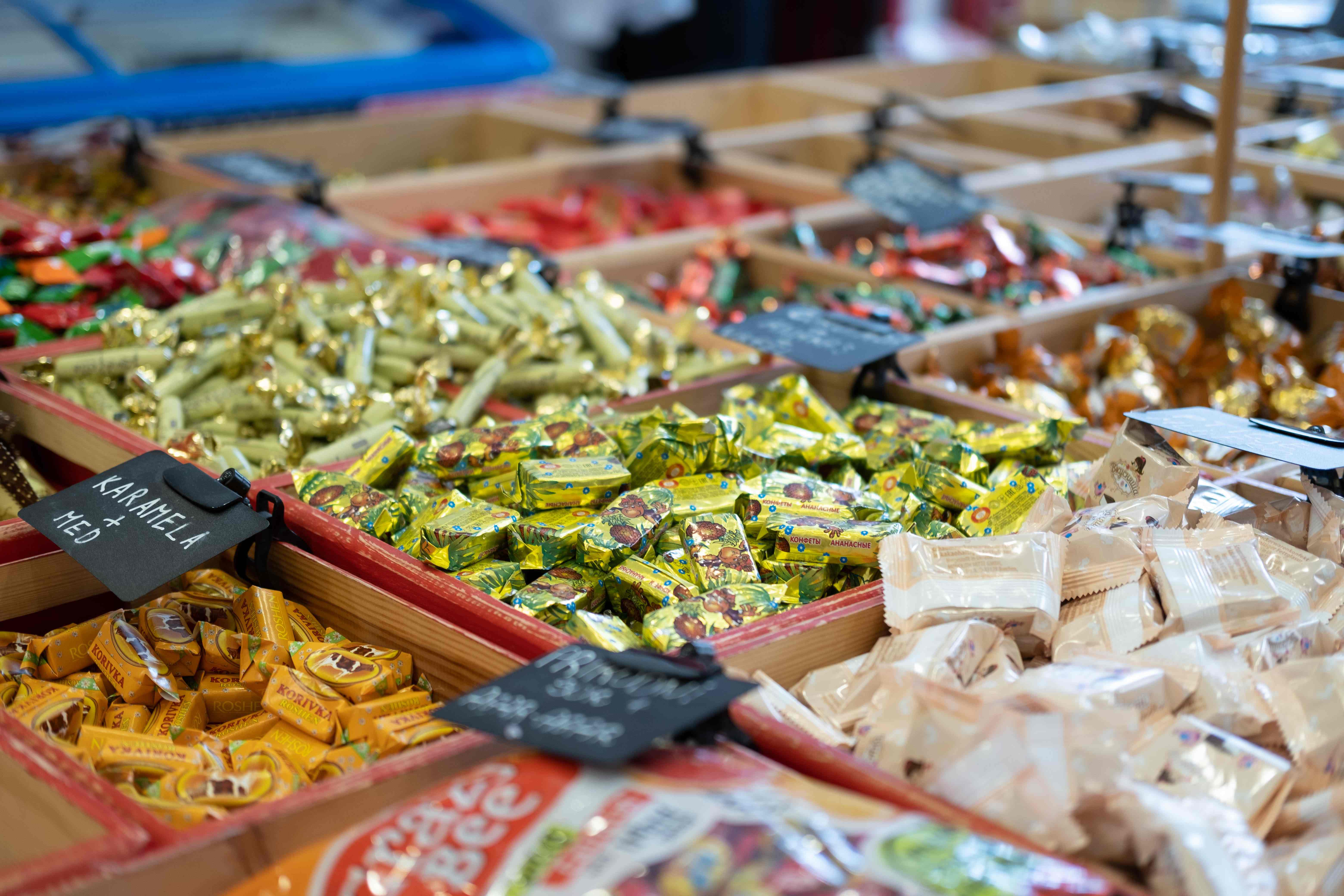 The colourful display of pan-Slavic specialist chocolates dominates the centre of the shop - you so want to try them all!
The colourful display of pan-Slavic specialist chocolates dominates the centre of the shop - you so want to try them all!
We have dark beers and light beers. They're from Lithuania, Russia and Poland. We have wines from Moldova and Georgia. We have sparkling wines from Russia and Ukraine. The Georgian wine is the best we have. Georgia claims to be the oldest winemaking country in the world. Winemaking is proven to be at least 8000 years old there. They have the oldest indigenous grape in the world. Georgians bury their wine underground in Kvevri - huge clay jars, which add an extra flavour. After the wine is fermented like this, it doesn't require the addition of preservatives when being bottled.
We have many preserved vegetables, like yellow tomatoes, seasonings and different types of sunflower seed, condiments that might be comparable to ajvar. This one is from Georgia and is a spicy mix of vegetables, using garlic, paprika and horseradish. One of our best-selling items is actually condensed milk. It's used not only in the Slavic kitchen but in the cuisine of Asia and South America.
This is kvass. It's a fermented drink, but it's non-alcoholic. It's popular in all north European countries, the whole Baltic region and especially popular in Russia. The taste is very specific. It's somewhere between Coca cola and beer. The ones we sell come from Russia and Ukraine. We also have a couple of types of birch juice. It's a traditional non-alcoholic drink made from the sap of the birch tree. It's maybe a little comparable to Croatia bazga, but much, much less sweet. It's very healthy. The sugars in it are natural ones. It has an incredibly refreshing taste and maybe a very soft lemon aroma (TCN tried this – it was amazing!)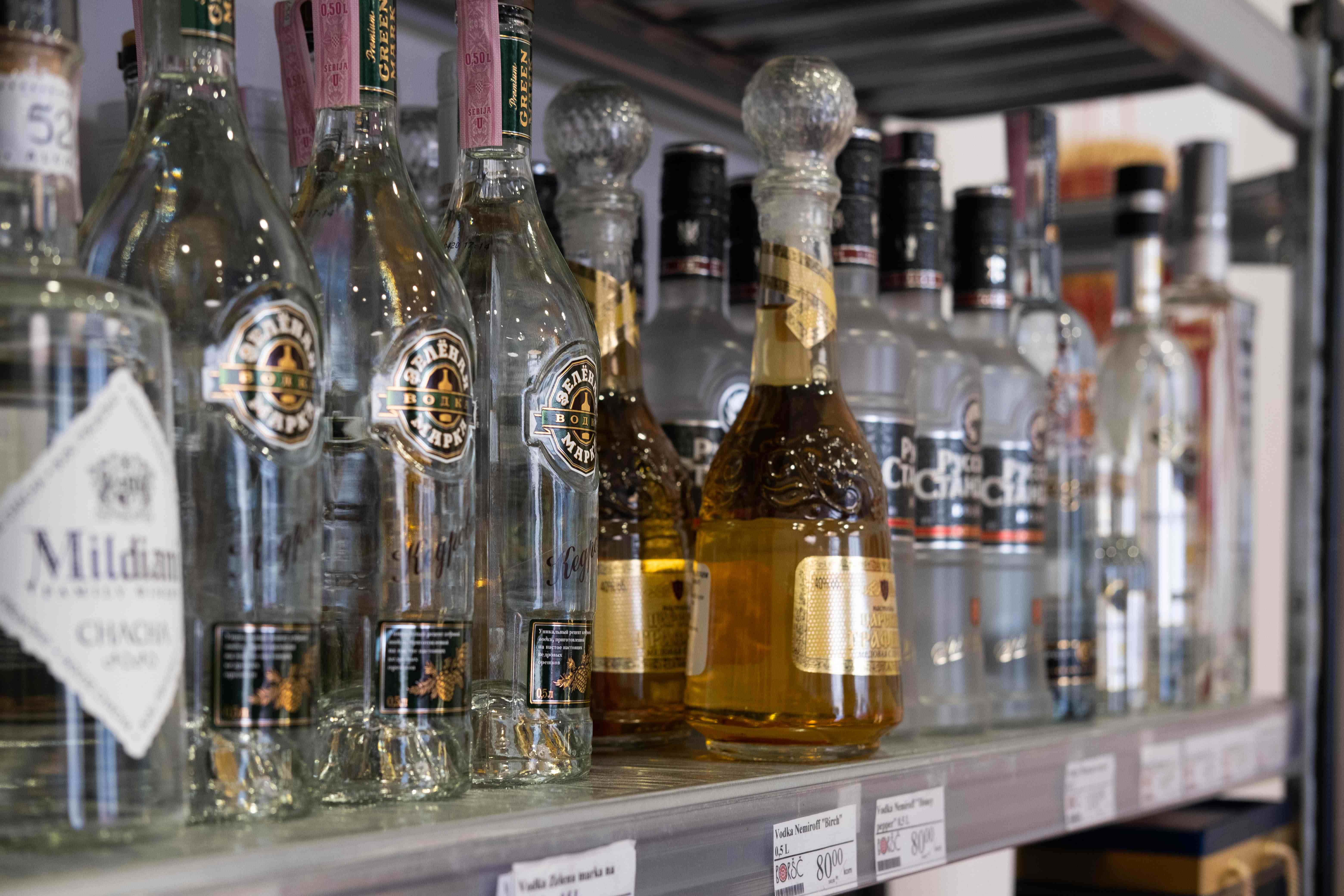
Some of the most prestigious items we sell are the varieties of hard alcohol. We have Armenian brandies. This one, Ararat, is considered to be the best one in the world. We have several vodkas, including Beluga, which is a premium vodka from Russia. We have a Ukrainian vodka and we have a honey and pepper flavoured one too. You can easily tell the quality of a vodka from the aroma and the aftertastes.
Most of our customers are actually Croatian - around 60%. Russians and Ukrainians are the next highest percentage. We have some Polish and Lithuanian people come in, but it's usually young people who are here to study with Erasmus.
I've been living in Croatia for about 11 years now. I enjoy life here. Everything is simple, easy, relaxed. It's considered one of the safest countries to live. And you can really feel that. It feels safer than the other two countries where I've lived. I'm maybe too young to yet know if I will stay here forever, but I can definitely say that I enjoy Croatia.
You can visit Boršč at Vlaška 58 (ulaz s trga Drage Iblera)
To follow our whole series on international cuisine and to follow the Croatian restaurant and gastro scene, keep an eye on our Gourmet pages
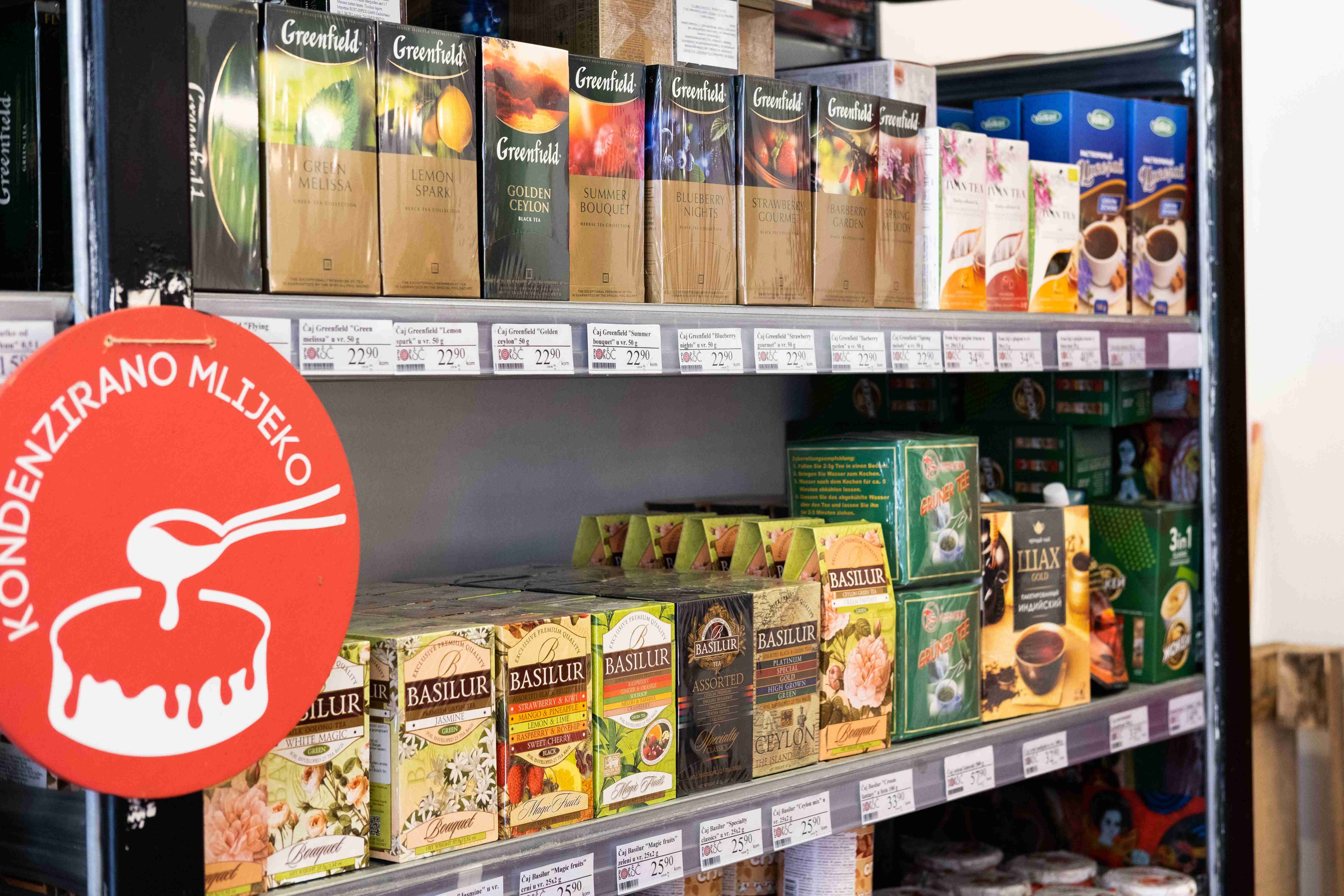
All photographs © Mateo Henec
For the latest travel info, bookmark our main travel info article, which is updated daily.
Read the Croatian Travel Update in your language - now available in 24 languages
International Cuisine In Zagreb: Khaos Thai
August 6, 2020 - Continuing our series on Zagreb’s international food offer and the stories behind these cuisines and businesses. This time, the spicy but light takeaway lunches of Khaos Thai.
Rinrampai Lateja and Saralee Madnui standing outside the Khaos Thai kiosk, next to Importanne Gallery on Vlaška ulica © Mateo Henec
Saralee Madnui: We’re both from Thailand. I’m from the south of Thailand, close to the border with Malaysia.
Rinrampai Lateja: I’m from Bangkok, the capital city. It’s in the centre.
Saralee: I’ve been here for five years, her for ten. We’re both here for the same reason; we’re married to Croatians. I met my husband when he was visiting Thailand. She met her’s while she was working on a cruise ship.
Saralee: Every region of Thailand has a different taste. In the north, the food is a little bit soft, but still spicy from curry paste. In the northeast, their flavours are really strong, spicy and sour, but they use much less fat. The land in that region is not so rich and the food is fast and simple, cooked quickly on the grill or in a pan. In the south, where I’m from, we have all the food; coconut, fish from the sea. The climate is good and anything can grow there. It’s a very rich cuisine. In central Thailand, the taste is more smooth, but flavoursome from strong seasoning.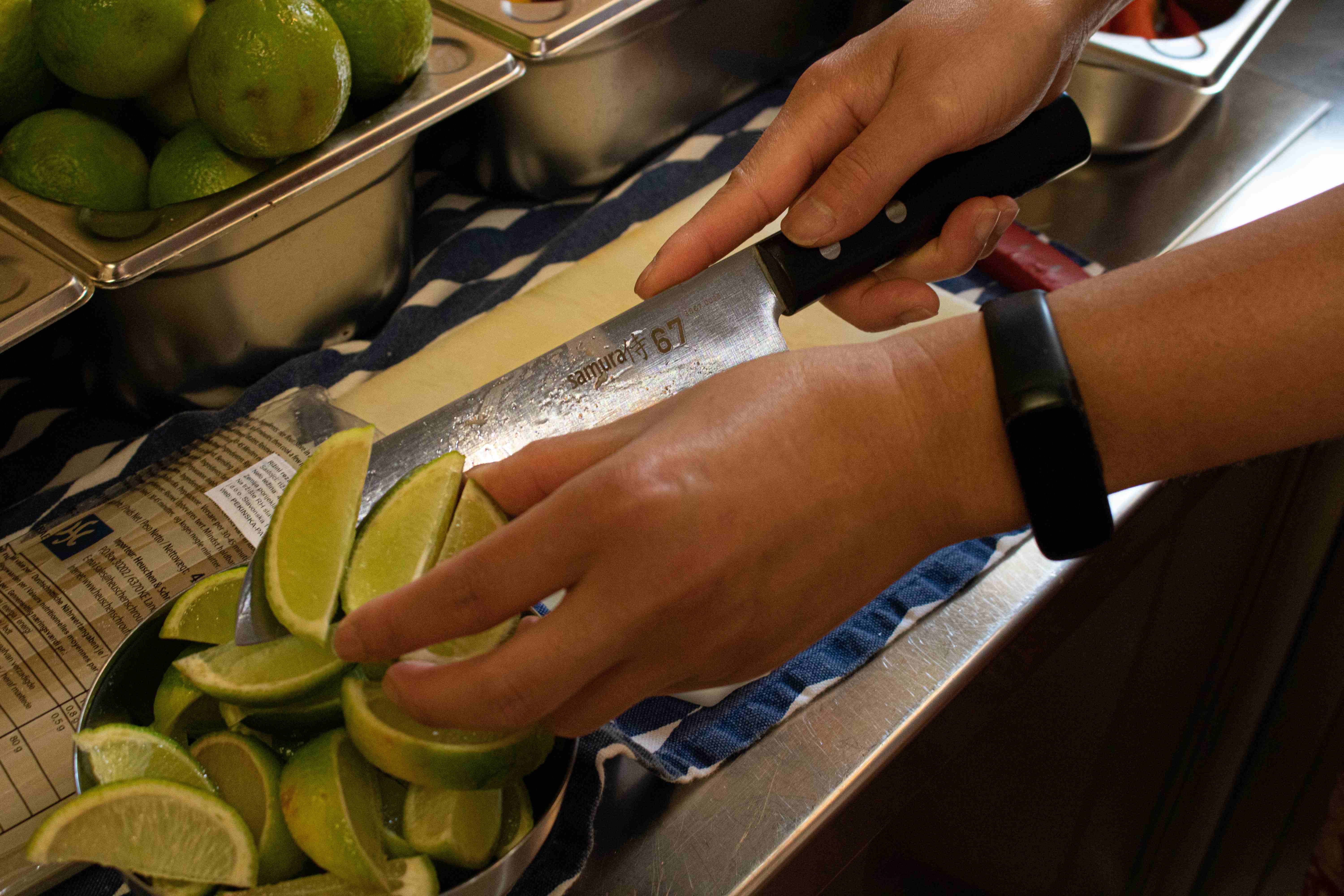
Khaos Thai © Mateo Henec
Saralee: The food at Khaos Thai is more like central Thai cuisine. We make some of the most well-known dishes from Thailand. Although, we also make Larb, which is from the northeast. It’s meat, fresh herbs, chilli, lime juice and rice. Salad is one of our most popular dishes here. Ours is salty, sour, crunchy and spicy, with dried shrimps, peanuts, green papaya, long beans, red tomato and chilli. It’s a very colourful dish. This is very typical of Thai cuisine; lots of different textures, flavours and colours. Like with Thai curry – the meat is cooked until it is soft, but we also add bamboo, for texture. The dish from this region that most reminds me of Thai food is goulash. It’s not the same, but it looks very similar to Massaman curry; red and with oil floating on the top. Goulash is spicy from paprika, whereas Massaman is spicy from herbs, a little more sour and it also has coconut.
Saralee: The first food that impressed me when I came to Croatia was cevapi. But, now I like more sarma. It has that sour taste that Thai people like, from the pickled cabbage. I also like it made with the green leaf (blitva). Interesting.
Saralee: When we are not working, we both very much like cycling. Cycling changed our lives.
Rinrampai: You cannot cycle in Bangkok. You would probably die. There’s so much traffic. And people just drive how they want. Never mind the rules. But, here it’s so easy to use a bicycle. You can get anywhere in Zagreb in 5 or 10 minutes on a bicycle. In Thailand, you must use a motorbike or a car.
Saralee: We love our bicycles here. We travel to work every day on bicycles. When we’re not at work we’re always riding our bicycles. I ride with my husband. I’ve ridden to Velika Gorica, Rakitje, Samobor and all over Zagreb.
TCN: You went all the way to Samobor on a bicycle?
Saralee: Yes. With my poor husband. But, he knows the tricks. He said “OK, we go Samobor for kremnšita. Then I will have power for the journey.” Ha! He was the same when we went to Velika Gorica. When we arrived, he said, “Ooh, do you remember that restaurant that is here..?"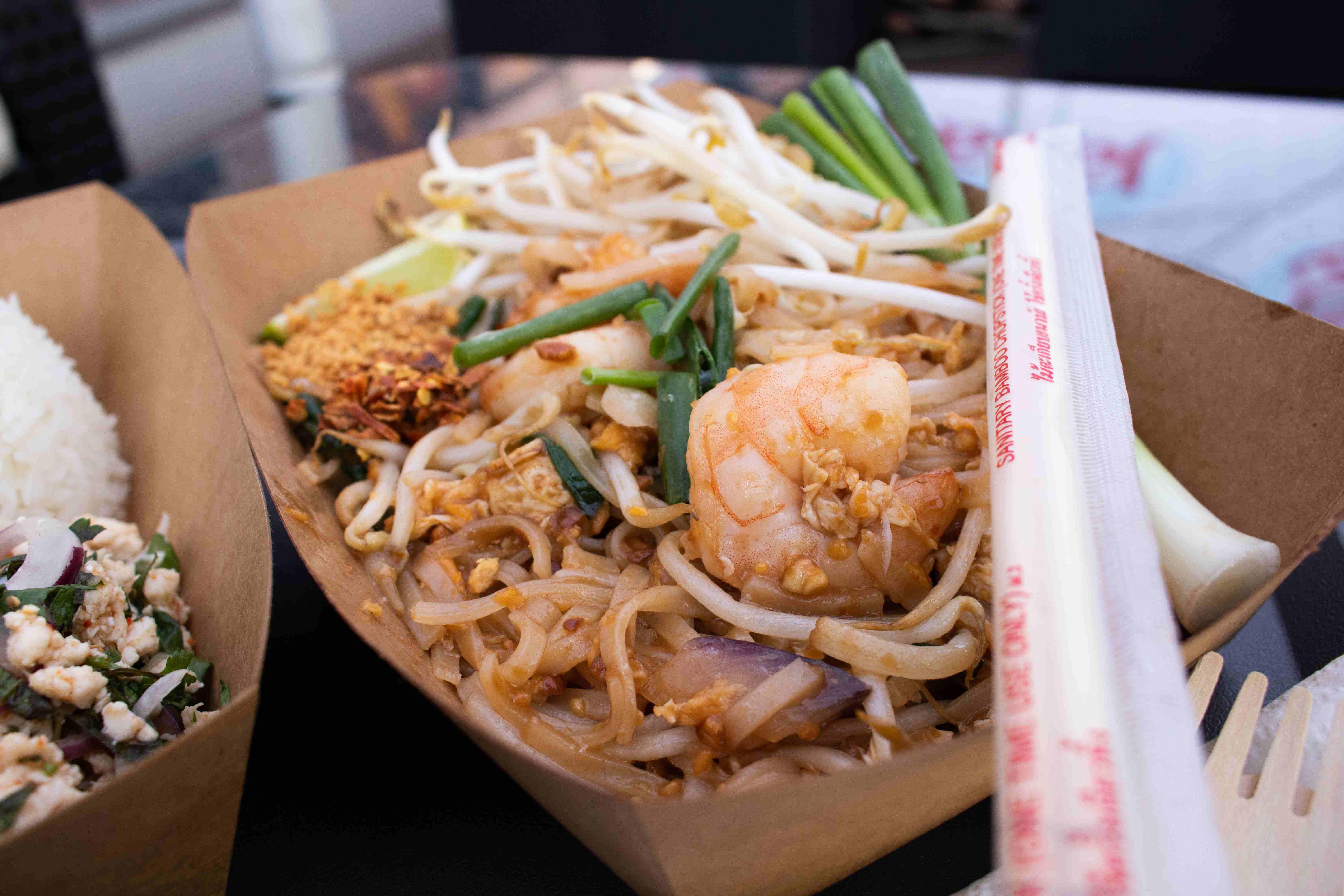
Pad Thai, one of Thailand's most famous dishes © Mateo Henec
Saralee: The dish people come back the most for here is Pad Thai. When we first opened, I thought maybe this might be too sweet for them. But, they really like it. They like the Thai Green Curry too. Some of our customers have been to Bangkok or other places in Thailand and they like to come here because our food reminds them of their visit. People tend to get the curry if they think Pad Thai is too soft for them in spiciness, or too light.
In the first week we worked, we opened at 12 midday until 8pm. There were queues around the corner. We couldn’t finish before 9pm. It was too much. There’s only the two of us. Nobody else can make this food. So, we had to reduce the hours. Now, we only work in the afternoons; midday until 5pm. But, that works very well.
Thai food is perfect for lunch; it’s all in one dish, you can hold it in your hands, it’s quite light food. The chilli and spice wakes you up and the lime and the herbs refresh you, so you are ready for the afternoon at work. It’s particularly good food for the summer.
Larb, a salad full of flavour from northeast Thailand and Pad Thai © Mateo Henec
Rinrampai: Life in Croatia is much easier than it is in Thailand. Less people, less traffic, it’s smaller, you can go anywhere. In Bangkok, if you have an appointment at 1pm, you must leave your house at 11am, sometimes earlier. The whole city is a traffic jam all day.
Saralee: Thai people and Croatian people are very similar in being very helpful, particularly to strangers. Any questions I had when I arrived, people were always happy to answer. Croatians are also a lot more friendly than other Europeans, in my experience. They are very open people. This is like Thai people too. Although Croatians follow the rules better than Thai people. Thai people ignore them all.
You can visit the Khaos Thai kiosk outside Importanne Gallery, at Trg Drage Iblera 10, on the corner of Vlaška ulica.
You can read the introduction to our series on Zagreb international cuisine and the first installment here
To follow our whole series on international cuisine and to follow the Croatian restaurant and gastro scene, keep an eye on our Gourmet pages here
International Cuisine In Zagreb: La Turka
August 4, 2020- Continuing our series on Zagreb’s international food offer and the stories behind these cuisines and businesses. This time, the authentic Istanbul experience of La Turka.
My name is Tayfun Azakli. I lived in Istanbul all my life. My mother’s family is from the part of Turkey near the Greek border, but my father’s family all come from the other side, near the border with Jordan. The western side is very close to the Balkan region in terms of food and culture. They like meat and vegetable dishes. On the Black Sea side, near Jordan, the diet is much more based on fish. The climate is also very different. It’s sub-Tropical there. They have tea fields. My grandparents were tea farmers. My mother’s parents were also farmers, but in their more European climate, they grew wheat, sunflowers, like here. They also speak different languages. On the Black Sea side, the people are not ethnically Turkish. They are Laz.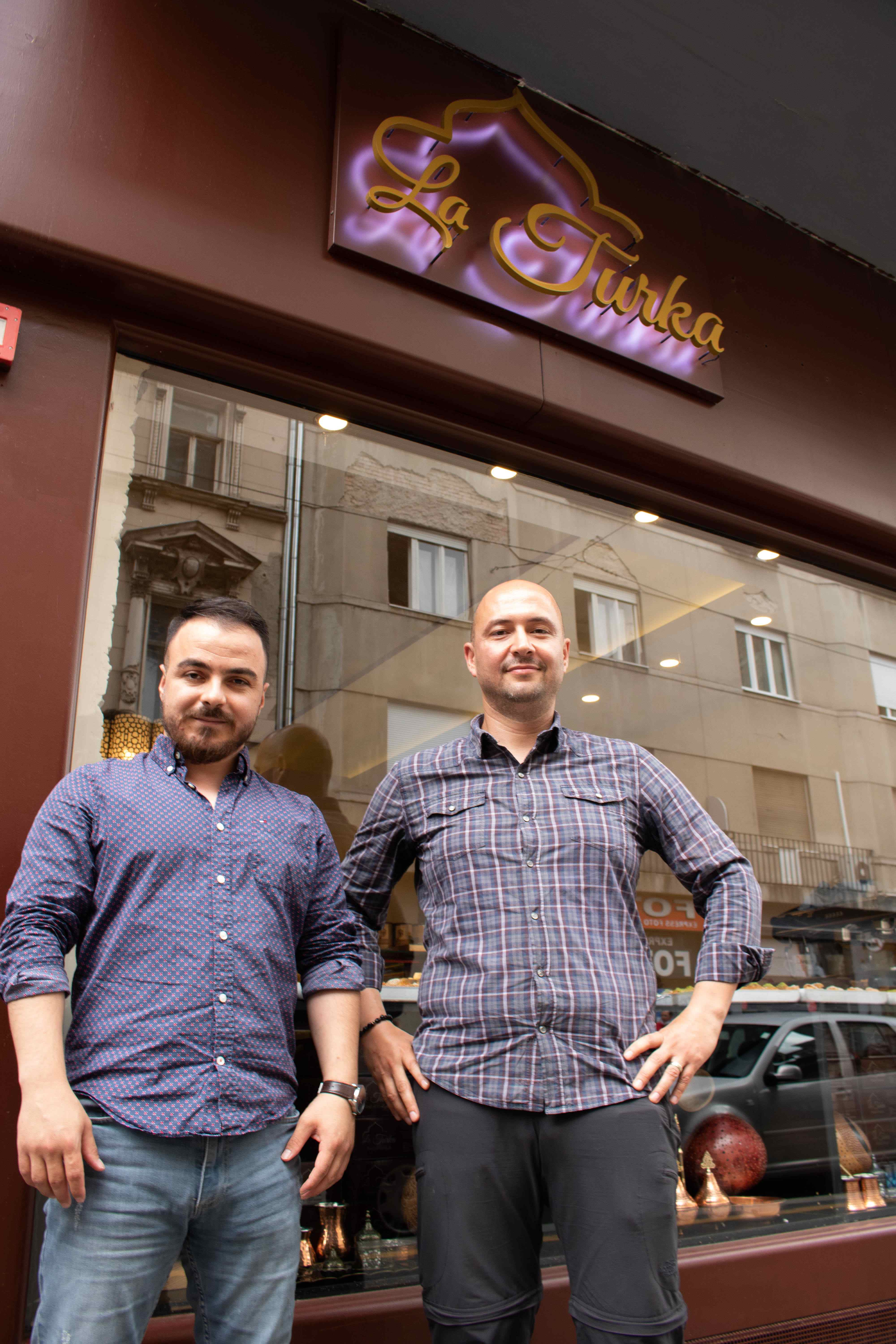
La Turka's retail manager Fares Hadad and co-founder Tayfun Azakli © Mateo Henec
I lived in Slovakia for two and a half years before coming here. I worked for Cisco Systems for 15 years – it’s one of the top 5 IT companies - and that’s where the job took me. My wife is Croatian and we decided to relocate here. We lived here for two and a half years initially, then we went to Dubai for six or seven years before coming back here two years ago.
I have two sons. I didn’t want them to grow up in Dubai. Dubai is very nice, but there’s a certain life standard. I think that if you get used to that lifestyle, you couldn’t be happy anywhere else. It’s very high end. Almost every house has a maid or nanny. Your income is three to four times what you would get in Europe. This is a huge contrast to my childhood. My mom was a teacher, my dad a civil servant. We had a limited income. Challenges to finish the month. I would work in the fields when I stayed with my grandparents. My kids were growing with a completely different perception of life in Dubai. I don’t expect them to have the same experience as me. Times have changed. But, I don’t want them to be handed everything on a plate.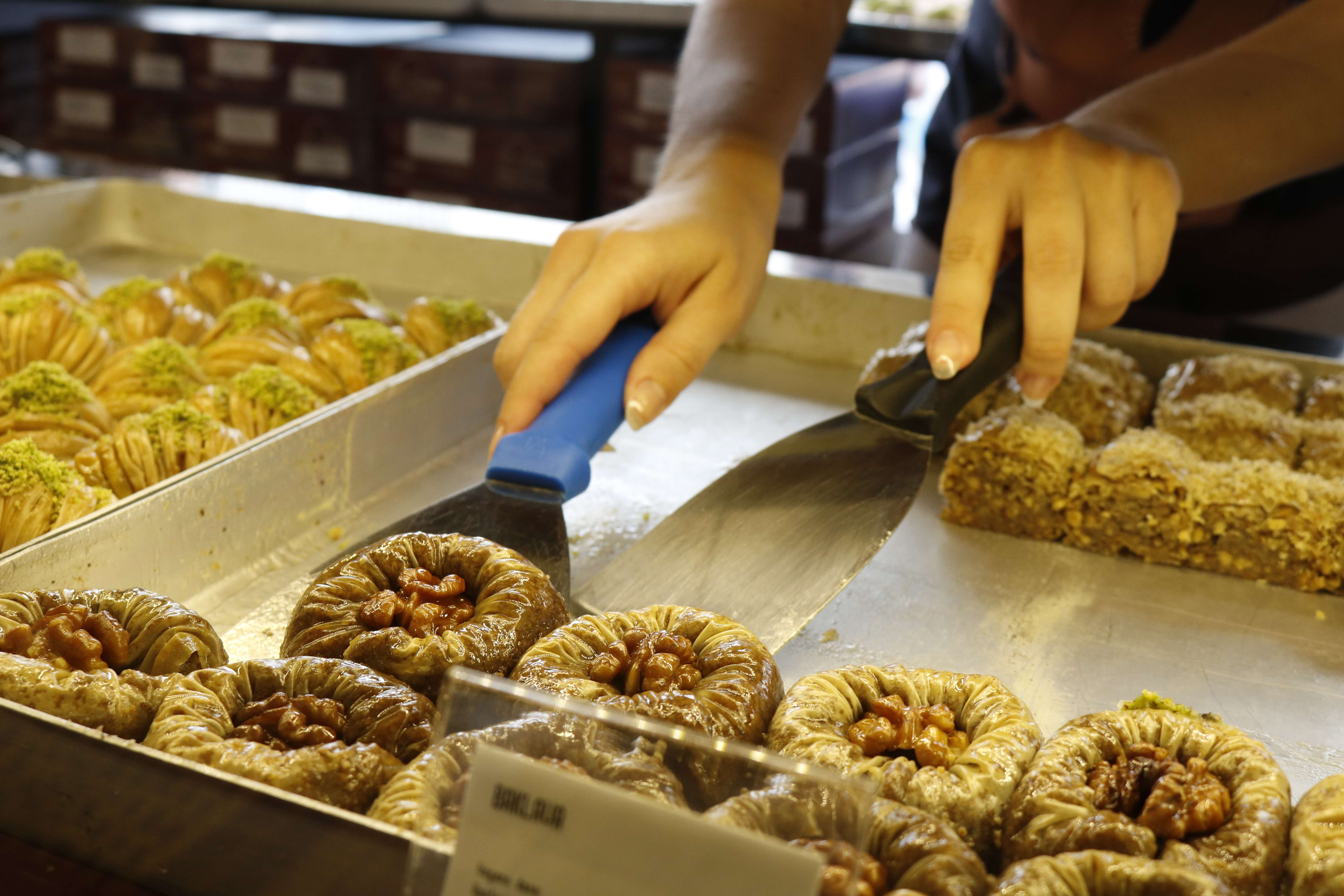
La Turka © Mateo Henec
Zagreb is a very safe and calm place to live. There is no rush in the day. The pace is quite slow. It can take some getting used to. People are nice. In any big city – be it Istanbul or London - people can be rushing and also quite rude. That doesn’t happen here. There are a lot of opportunities for businessmen here. It’s a good combination, a good place to invest. For me, at least.
In 2012 I met my business partner, Vedi Zarifgil, here in Croatia. He’s also Turkish and married to a Croatian. We started the company the next year. Originally, we were focussed only on wholesale and export. Only last year we decided to go into retail. We partnered with our friend, Fares Hadad, to open this store. It’s gone well. We plan to open two more in Zagreb during the next six months.
Ten years ago in Zagreb, there were only a few Chinese restaurants and a couple of bad Mexican places. Now, it’s very vibrant. The product that we sell is not foreign to people here, but they usually only know the Bosnian version. This is the Turkish version.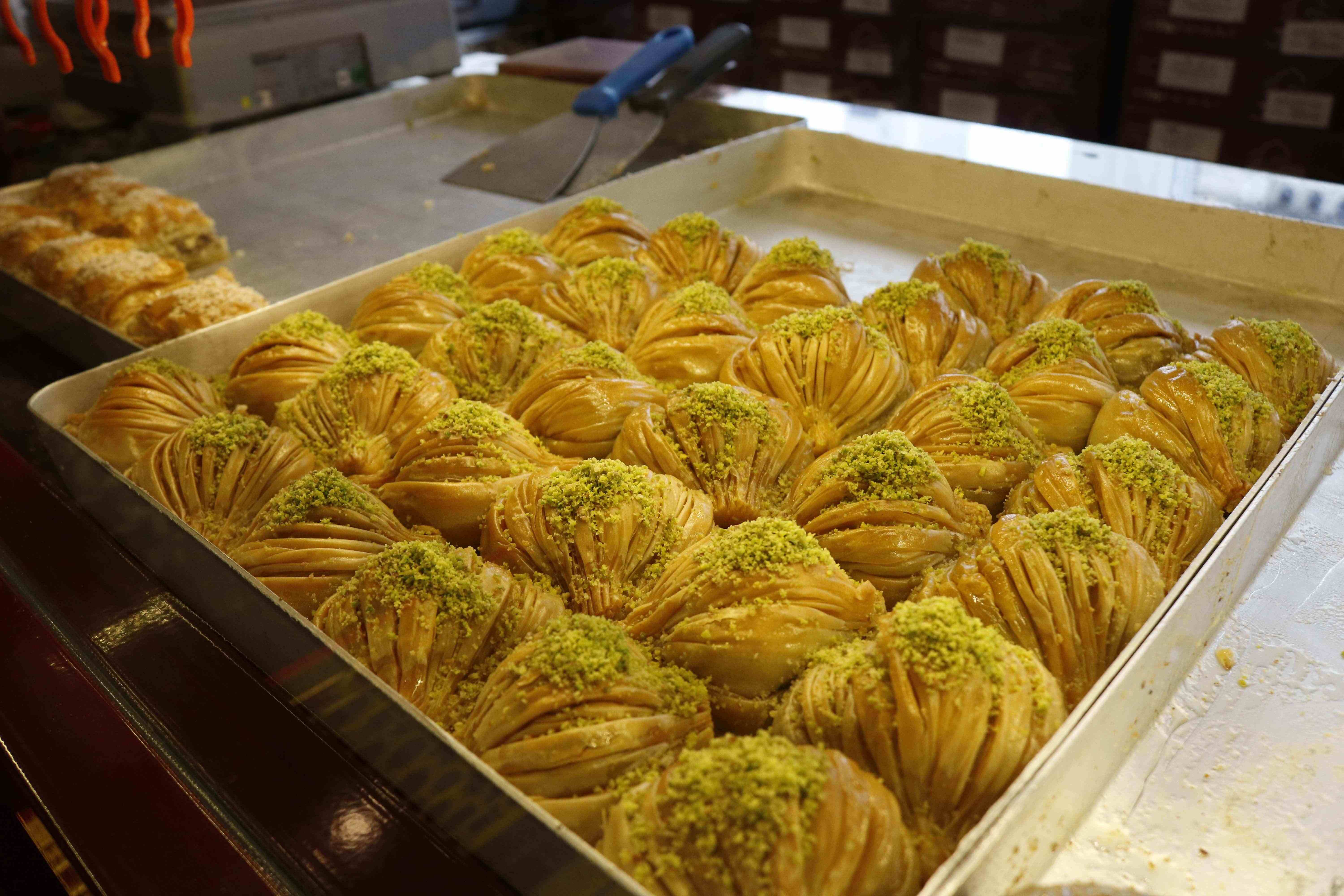
La Turka © Mateo Henec
We’re very careful about the quality of our product. For a niche product like this, I believe that you must present it at a very high quality. Then, it will sell. We didn’t expect to be so much of a hit, but we were successful from day one.
The main product we sell is baklava. The Bosnian version is made with walnuts. That’s what grows there. Ours has more finesse. In comparison, we make ours with extremely thin layers of pastry and the main nut we use is pistachio. In Bosnia, they tend to use a lot of syrup. Ours is drier. The syrup must not overpower the flavour of the pastry, the nuts, and the ghee (clarified butter). It’s a very fine balance. You should be able to taste each ingredient.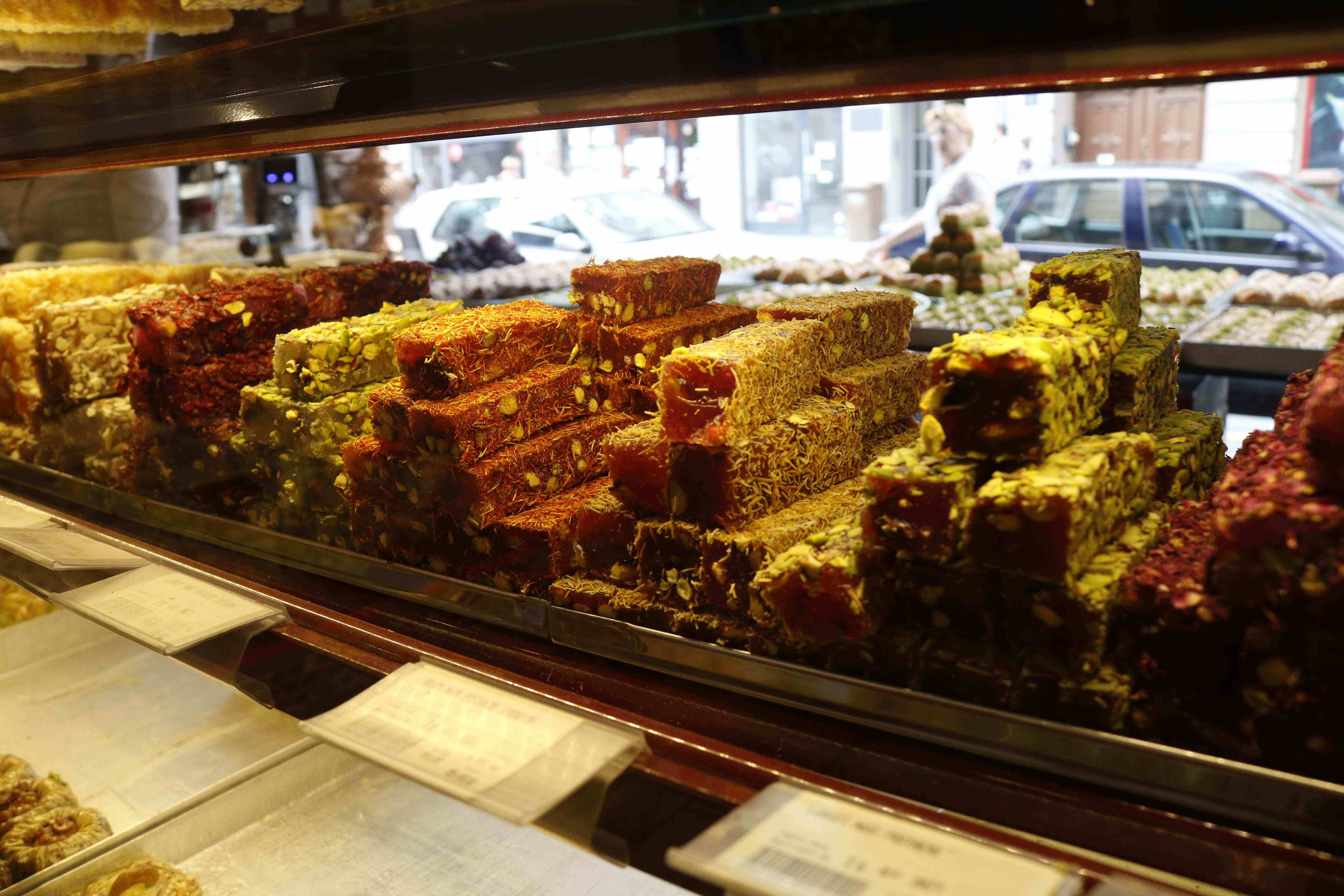
A selection of halva at La Turka © Mateo Henec
We import our pistachios from southern Turkey. Ghee is quite expensive; it’s rarely used in Bosnian baklava. Certainly not commercially. We have around 30 different variations of baklava on sale. We use almonds, pistachios, walnuts, cashew. For each of those varieties, we also have chocolate versions. For the classic baklava, the amount of nut is set, and it is ground. For alternative versions, we use whole pieces, sometimes with cream.
The presentation is key. It must look good. Classy. We want people to stop and look. We chose this street to open our business because everyone ends up here at some point. All visitors come to register at MUP. Our main client base walks here every day.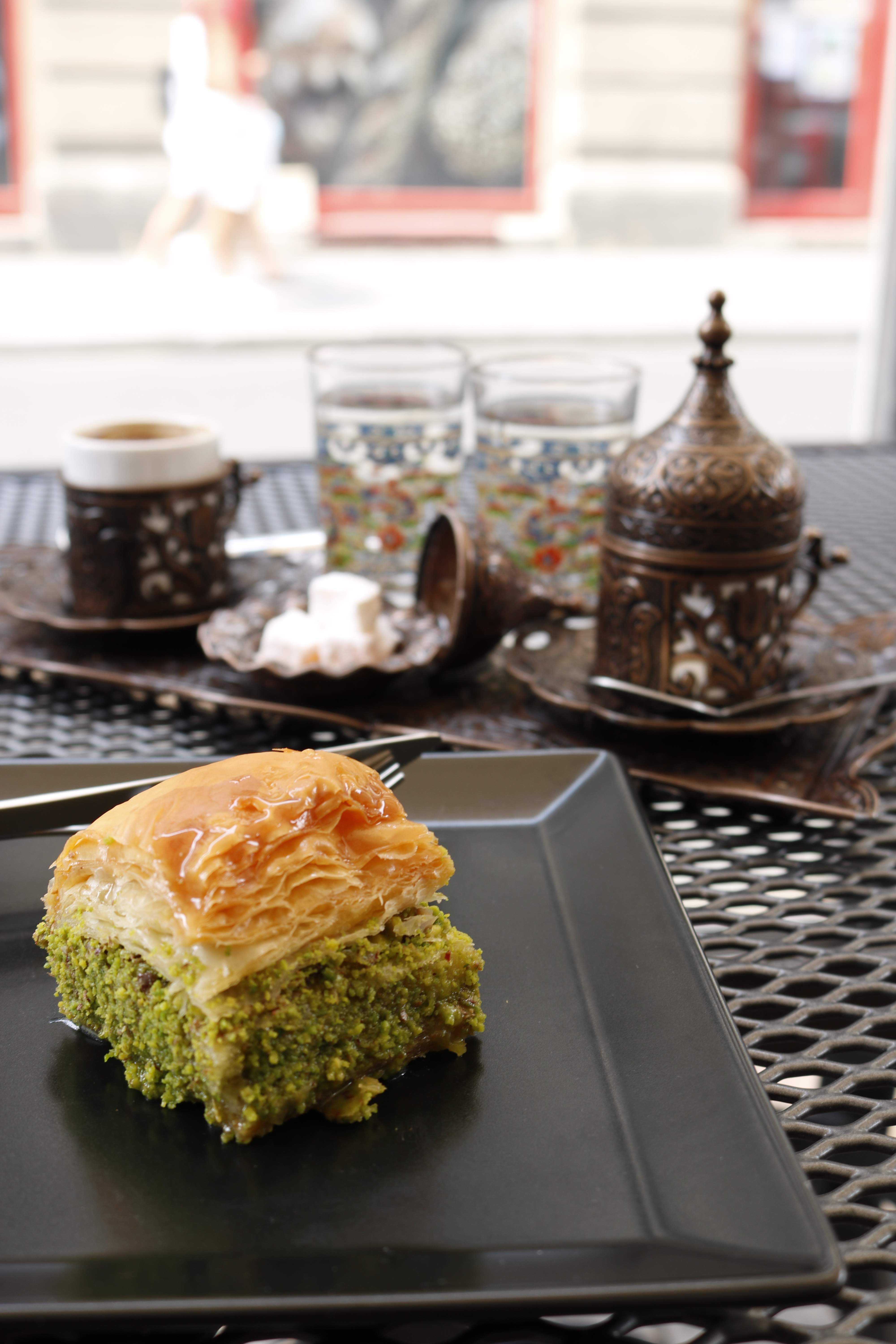
Baklava and Turkish coffee, served on the terrace at La Turka © Mateo Henec
We also have around 40 different kinds of Turkish Delight, halva (made from tahini, with different versions using cacao, chocolate). We sell the finest quality coffee available in Turkey. It’s quite unlike anything on sale here. We also have Turkish tea, which we present complimentary to anyone who comes to sit and try our food.
We want to offer an authentic taste of Istanbul. Everything from the interior design to the music we play helps us do this. We’re aiming to be a little like the Grand Bazaar. Except we don’t sell carpets, obviously. Ha!
You can visit La Turka at Petrinjska 47
You can read the introduction to our series on Zagreb international cuisine and the first installment here
To follow our whole series on international cuisine and to follow the Croatian restaurant and gastro scene, keep an eye on our Gourmet pages here
International Cuisine In Zagreb: Royal India
August 3, 2020- Continuing our series on Zagreb’s international food offer and the stories behind these cuisines and businesses. This time, from Punjab to Tkalčićeva; Royal India.
Royal India in the heart of Zagreb is the longest standing restaurant that sells Indian food. Like its chefs, owner Satinder comes from north India, the area’s distinct cuisine of spicy curries, oven-baked and marinated meats, and inviting breads synonymous with the Indian restaurant offer around the world.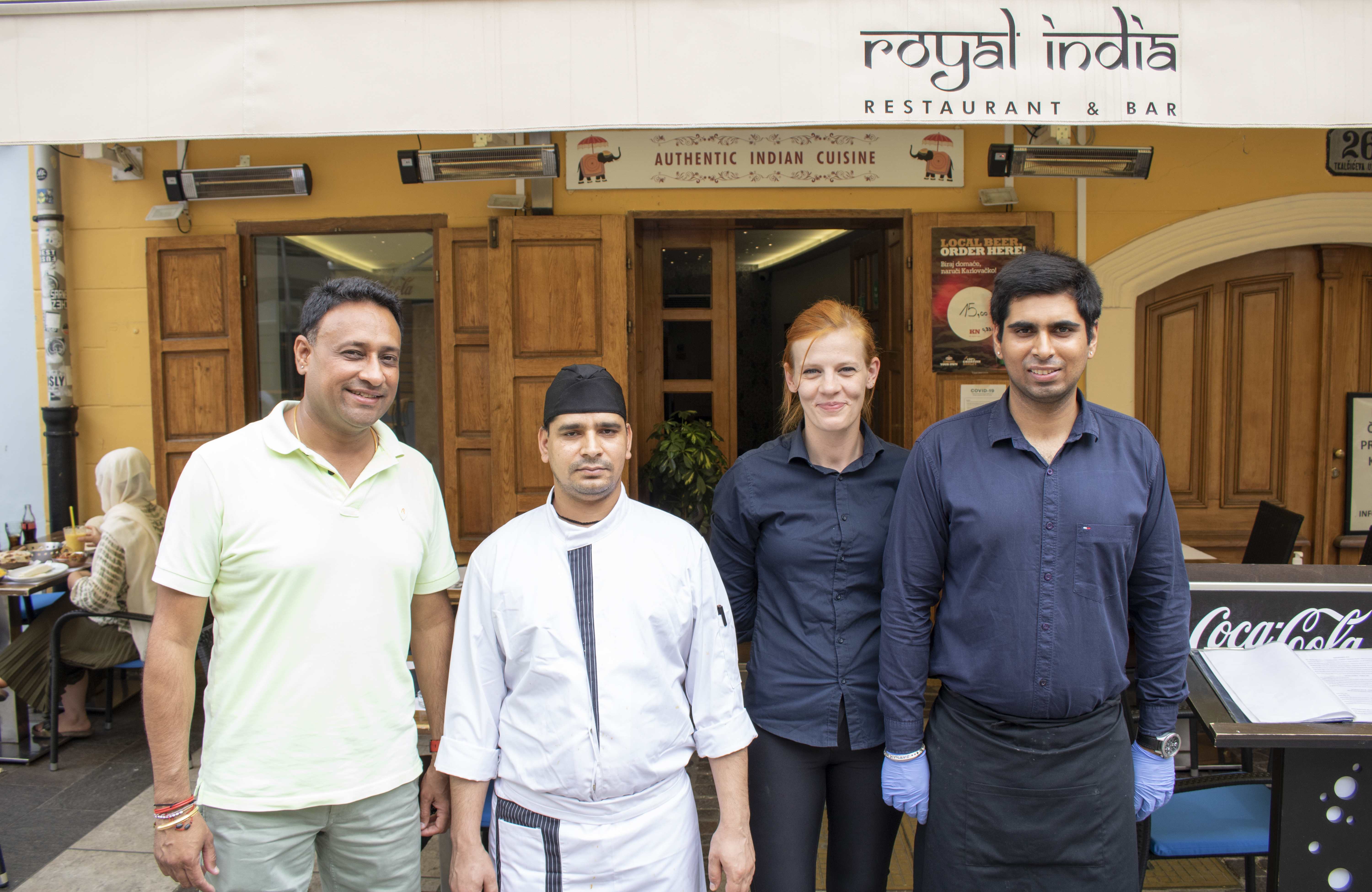
Satinder Pal Singh (far left) and some of the staff of Royal India © Vedran Pažin
My name is Satinder Pal Singh. I’m from the northern part of India, a city called Chandigarh. It’s the capital of Punjab and Haryana. It’s near New Delhi. I say near, it’s 250 kilometres away.
Here at Royal India we serve authentic Indian food. Mainly we concentrate on food from north India. The food from the north is totally different from food in the rest of India. In the south, the kitchen is totally different; dosas, fish. If you eat Indian food anywhere else in the world, 99% of the time you will be eating recipes from the north of India. It’s the most popular cuisine of India. We have a lot of different kinds of curries – chicken, lamb, and many vegetarian dishes - chicken tikka butter masala is the most popular one we make at Royal India. Northern India cuisine also comes with more bread than that in the south - naan breads made plain, with meat, with onion, with garlic, and chapatis. We always use Basmati rice. Only. That is very typical of Northern India. They use long grain rice in the south. Basmati rice has the best aroma, flavour, and texture (this is true – Kitchen Editor). We use Basmati rice because it grows in the north.
We use very different spices and flavours in Northern India cuisine. In the south, they use curry leaves, coconut, things like this. We use cardamom, cumin, fresh coriander and coriander seeds, star anise, black pepper, bay leaves, cinnamon, and a lot of spice mixes. We grind spices and mix them together in known amounts. The resulting mixture is called garam masala. We make our own specific garam masala here on the premises. We buy only whole spices. They are always the best. Whole spices stay fresh for longer and give a better aroma. The garam masala can vary from region to region. Across northern India, it is almost exactly the same. Within the restaurant setting, it depends on the chef.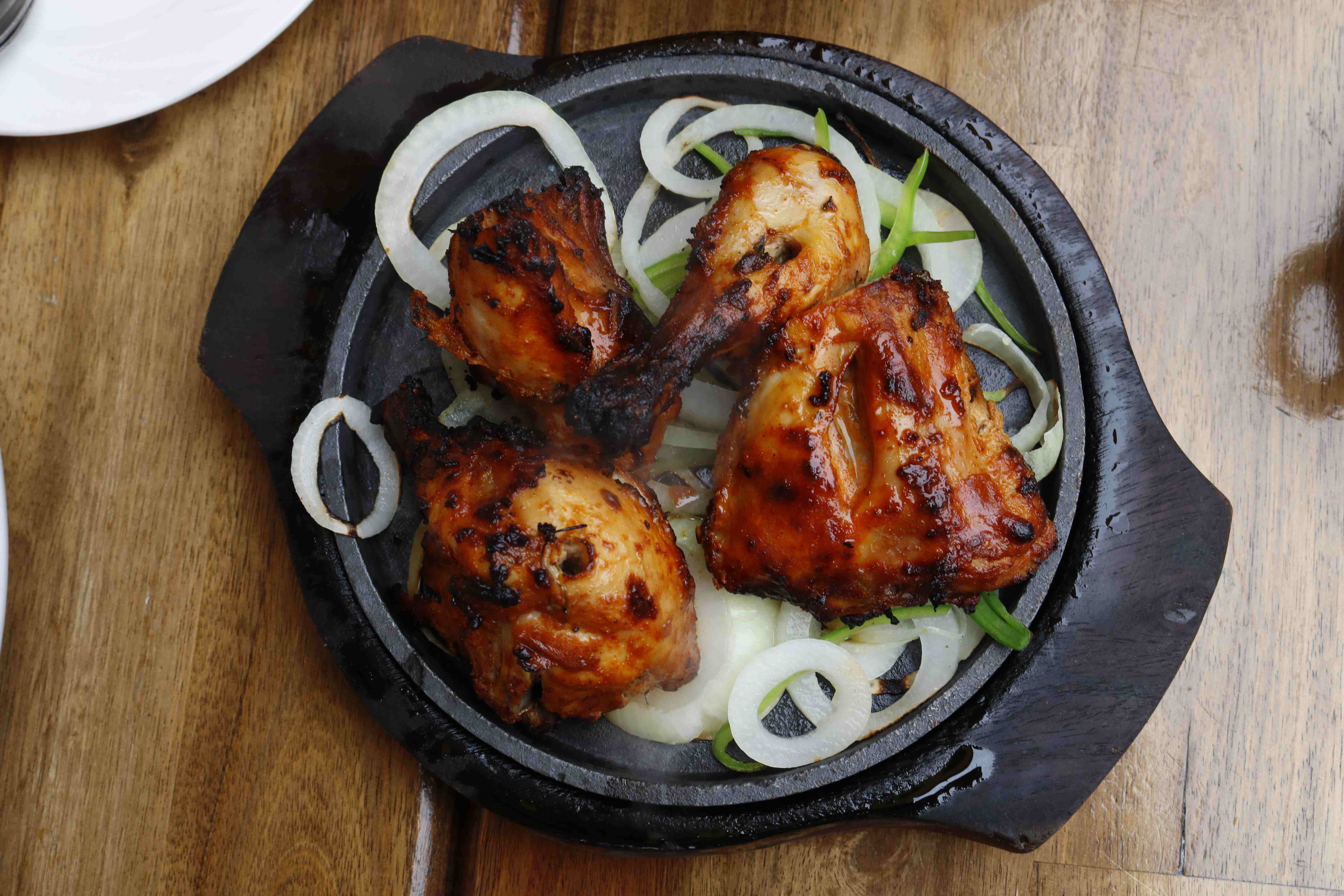
Marinated, grilled meats are a specialty of northern Indian cuisine © Vedran Pažin
The biggest distributors of spices are in Germany and in the Netherlands. You just can’t find what we need in Croatia. We get our spices from them and they import directly from India, Turkey and even some parts of Africa.
We’ve been open now for six years. Our most popular dishes are Murgh Tikka Butter Masala, which is made with chicken and Lamb Rogan Josh. When I first arrived here, I saw the market and it wasn’t good. There was only one restaurant in Zagreb making Indian food back then and I wasn’t impressed. When we opened Royal India, they closed.
Croatian people seem to really like our food. We make the dishes according to their tastes; they can choose mild, medium, spicy or something more authentic. We ask. Every curry we make individually, fresh to order. Because we’re on Tkalčićeva, we also usually get a lot of international visitors. They are normally already familiar with Indian cuisine. You can tell because they order different things and they usually already know what they want to order from the menu by the time the waiting staff come to the table. Croatian people who are less familiar with Indian cuisine sometimes need more guidance around the menu, explanations and, of course, we are very happy to do that.
All of our kitchen staff are from India. They are all from the north of India. At first, when I was holding interviews, most of them did not even know where Croatia was. I had to explain. In the past, it was very difficult to get working visas for such specialist chefs. Four years ago it was tough. They had a quota system and it was first come, first served. If you were not among the first to apply for that year’s quota, you had to wait for one whole year to apply again. The quota was 31 chefs for the whole of Croatia, irrespective of origin or specialty. But, now they changed the system and we no longer have any problem. It’s much more liberal now. The implications for businessmen, foreign investors in Croatia, are greatly improved because of this change alone. The change coincided with Croatia becoming a full member of the European Union. Quite a few young Croatians have left, to take advantage of job opportunities elsewhere in Europe. The deficit of manpower prompted the change. This is how the international jobs market is supposed to work.
Mango lassi (a sweet yogurt drink), curry, chapati, biryani (a rice dish) and marinated, grilled paneer cheese at Royal India © Vedran Pažin
I first came to this region because of business. I was importing textiles from Bosnia. I wanted to expand the business into Croatia, but we had difficulties. We could sell our product, no problem. The difficulty was getting people to pay their invoices. So, I decided to open a restaurant instead. Here, people pay immediately, so we don’t have that problem. I couldn’t have opened this kind of business in Bosnia because the economy is so much worse there. And the locals are much more hesitant to try foreign food. In Zagreb, the people are more openminded and more well-travelled. The import and export area I was in is now populated by a lot of Chinese and Turkish businesses. There’s a lot more competition than when I was doing it. I’m much happier doing this.
I live in the centre of Zagreb. One of the best things about living here is that it’s so safe. People are really very friendly. When I have time off from the business I enjoy sitting with friends. They are mostly Croatian. It was easy to make friends here. We usually go to coffee shops or each other's homes. I normally suggest a coffee shop on Tkalčićeva, just because it’s easy for me to get back to work if I’m needed.
We didn’t do home delivery during the restaurant lockdown. Our sales went down 80% over the year as a result. I have another restaurant in Dubrovnik, Incredible India; we didn’t even open yet this year. In the season, I usually travel constantly between Zagreb and Dubrovnik. Four or five times a month. We are currently moving the restaurant to a new site in the Old Town, so construction work is happening and I must travel to oversee that. We should be opening in the first few days of August, although I haven’t seen many tourists there this year. That’s a worry. The funds for the restaurant move are coming purely from my own pocket. I will wait until the end of the year, see the situation and maybe make some decision then.
You can visit Royal India at Tkalčićeva 26
You can read the introduction to our series on Zagreb international cuisine and the first installment here
To follow our whole series on international cuisine and to follow the Croatian restaurant and gastro scene, keep an eye on our Gourmet pages here
International Cuisine in Zagreb: Layali Lebanese Restaurant
July 22, 2020 - Offering Arabic food, Middle Eastern lunches like falafel and dips with salad, or spicy grilled meat wraps, Layali Lebanese holds an authentic provenance.
Once famous mostly as a run of beer bars and backpackers, over recent years Tkalčićeva in the capital's upper town has also become the focal point of international cuisine in Zagreb. But, even among the city's more exotic menu of meals, Layali Lebanese Restaurant stands alone. Offering Arabic food, their light, Middle Eastern lunches like falafel and dips with salad, or spicy grilled meat wraps hold an authentic provenance. Mastermind behind the menu is Zafer Hindash, who comes from the Middle East. He runs the restaurant with his nephew Bernard Solaković. Both practicing Muslims, alcohol is not permitted on their premises, so this is a destination that's all about the food
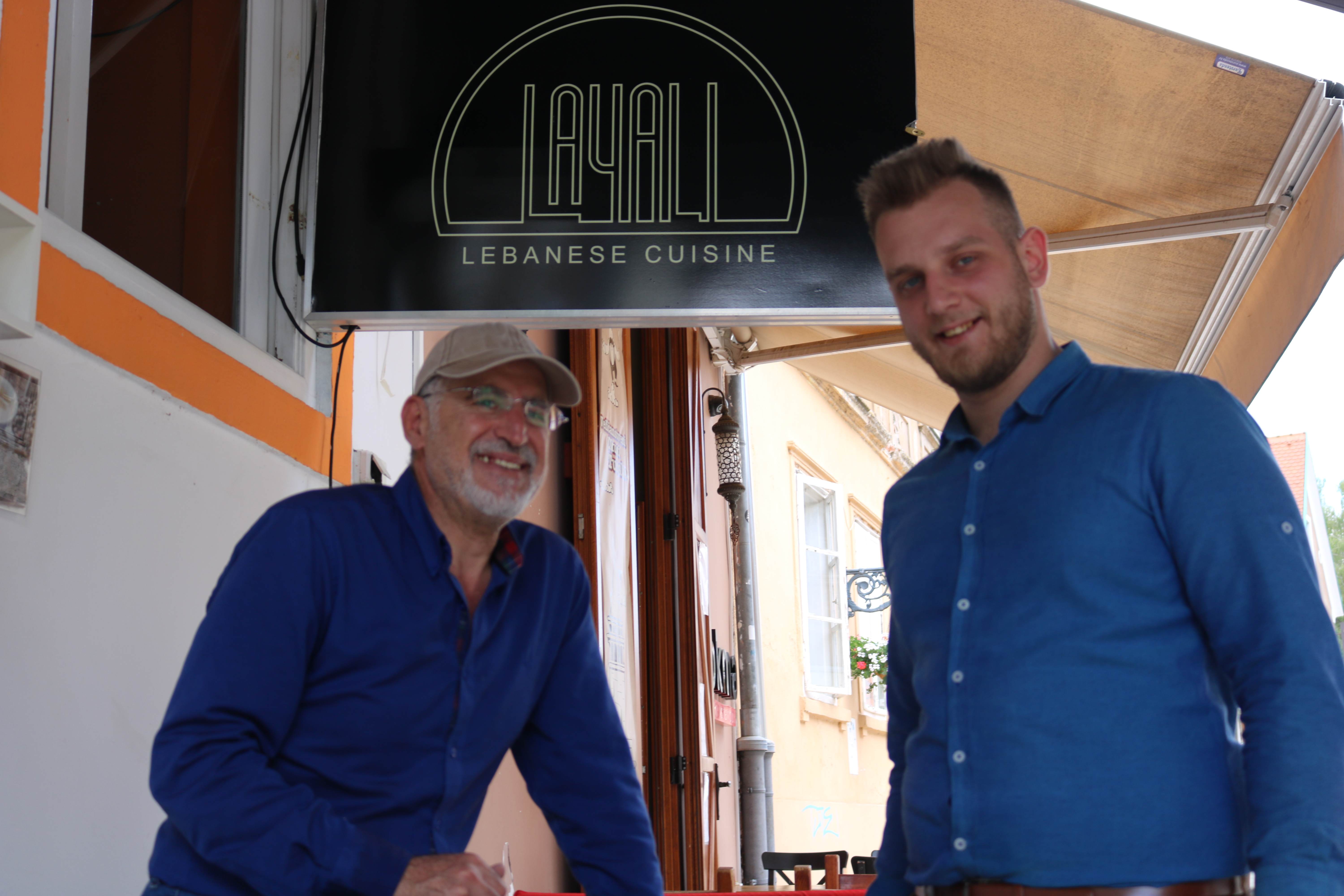 Zafer Hindash and his nephew Bernard Solaković © Total Croatia News
Zafer Hindash and his nephew Bernard Solaković © Total Croatia News
Zafer: My name is Zafer Hindash and I'm 53. I was born in Jordan but I left there in 1976. I lived almost all my life in Dubai. My brother got a job there, so we moved the whole family. The things I remember from Jordan are the people, the neighbours, the atmosphere. It was a very similar feeling in Dubai when we arrived. There were not so many rich people there back then, unlike today. You cannot imagine what it was like to be there to see all the changes. Really, it felt like everything was running too fast. You could walk down the street one day, come back the next and it would look totally different. A few years ago, I was searching for the next place I could be, for retirement. I went to Turkey, I visited here and I liked it. I left Dubai in 2017 and came to Zagreb.
Bernard: I didn't really know so well Arabic food until Zafer came here. I'd tried things my aunt would make on her visits here from Dubai. The food inside a Muslim home here in Zagreb is different from what you would find in a Catholic home. We brought many dishes here from Bosnia, which is where the older generations of my family are from, so it's very normal for us to make pita and burek at home. Some people might only buy this from pekara. We also make baklava at home and other sweet specialties.
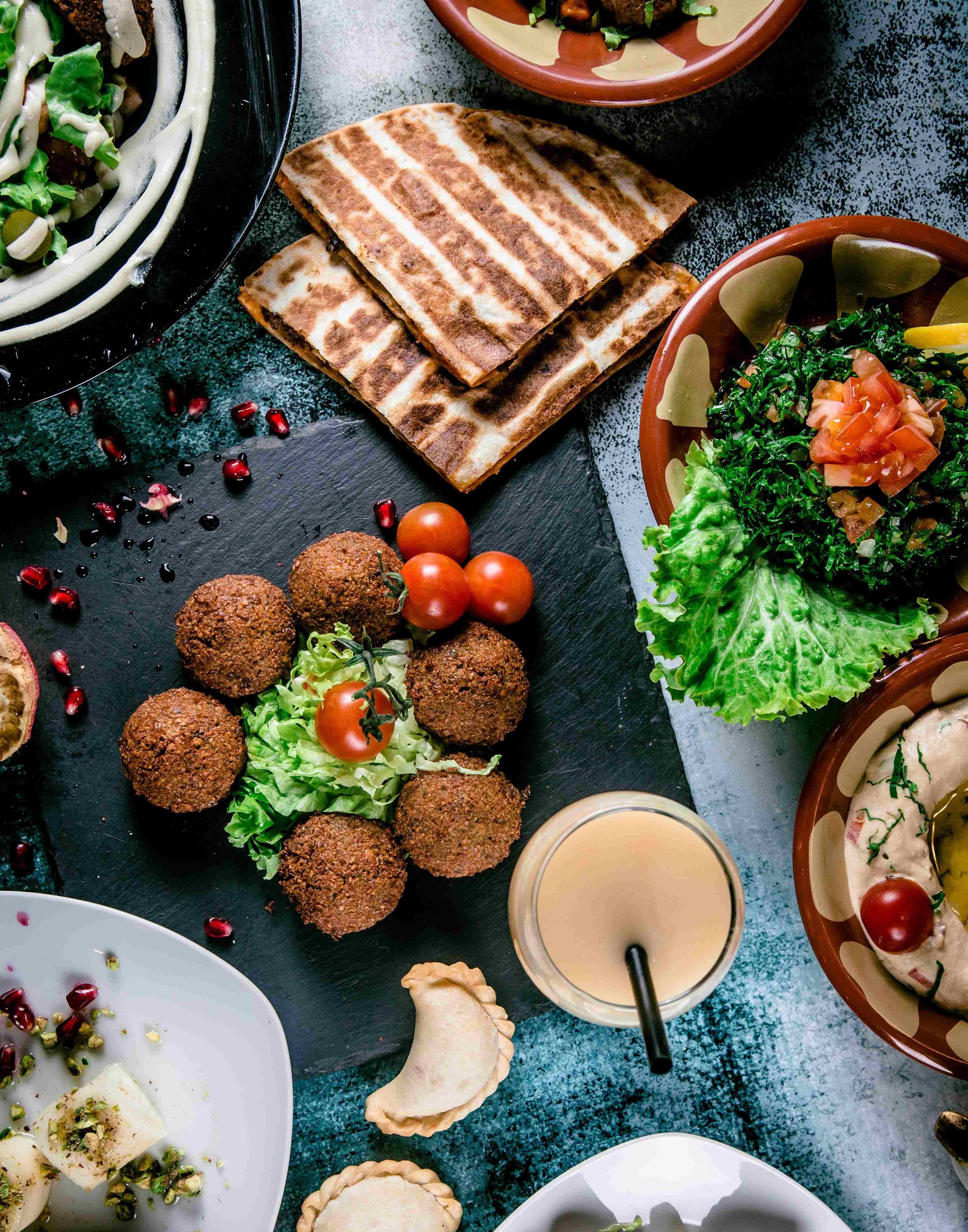 © Layali Lebanese Restaurant
© Layali Lebanese Restaurant
Zafer: I travelled a lot and, honestly, most places are the same; you can find good people everywhere. But, I love it here. The people, the neighbours. The pace of life is more stable here than in Dubai. I am at an age now where you cannot handle everything moving so fast. This is now the best place for me to be.
Bernard: At first, people couldn't understand why we don't serve alcohol here. Tkalčićeva is so famous for drinking. But, after we explained that it is a religious thing, that this is our Hallowed way of working, people accepted it. We offer instead our Arabic teas and coffee.
Zafer: I was in business all my life. This is the first time I worked with food. Before this, it was only a passion in my home. Preparing food is like the sea; so many spices, so many different combinations. The food we make at Layali is the food I love to make at home. I would describe our food as Arabic, but really now, some of it is international. They ask for it everywhere. And not just falafel and hummus. I get shocked when people ask for muhamara or fatoush. I guess food and people travel a lot more these days.
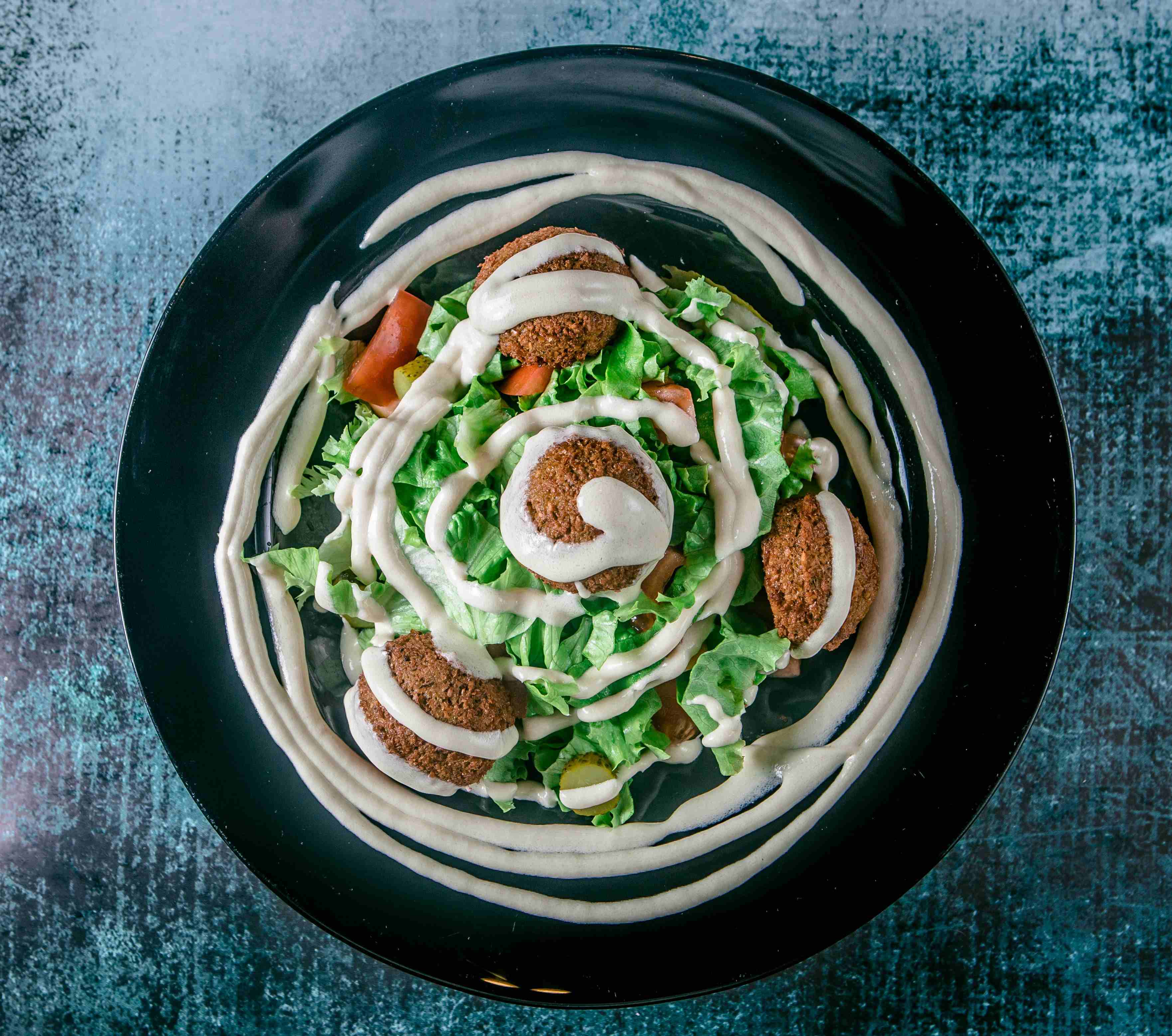 © Layali Lebanese Restaurant
© Layali Lebanese Restaurant
Bernard: It can be tricky to eat out here if you are a Muslim, because so much of the meat here is mixed and it may contain some pork. It's even more difficult if you strictly adhere to religious rules which dictate you can only eat Halal meat. We have a Halal supplier for all of our meat here. There are farms in Croatia and the wider region which provide meats in this way.
Zafer: All of our spices are imported. We tried everything that is on offer here, but nothing is quite the same as back home. All the spices we use are really fresh. We import them from Lebanon or Dubai. We use the fresh parsley from here. In every Arabic home, you'll find a mix of seven spices. It's very important to our cuisine and it can differ from house to house, from region to region. We have different spice mixes for each meat dish we make. We tone down the spices to more suit European tastes but, if someone asks, we make it how we make it back home.
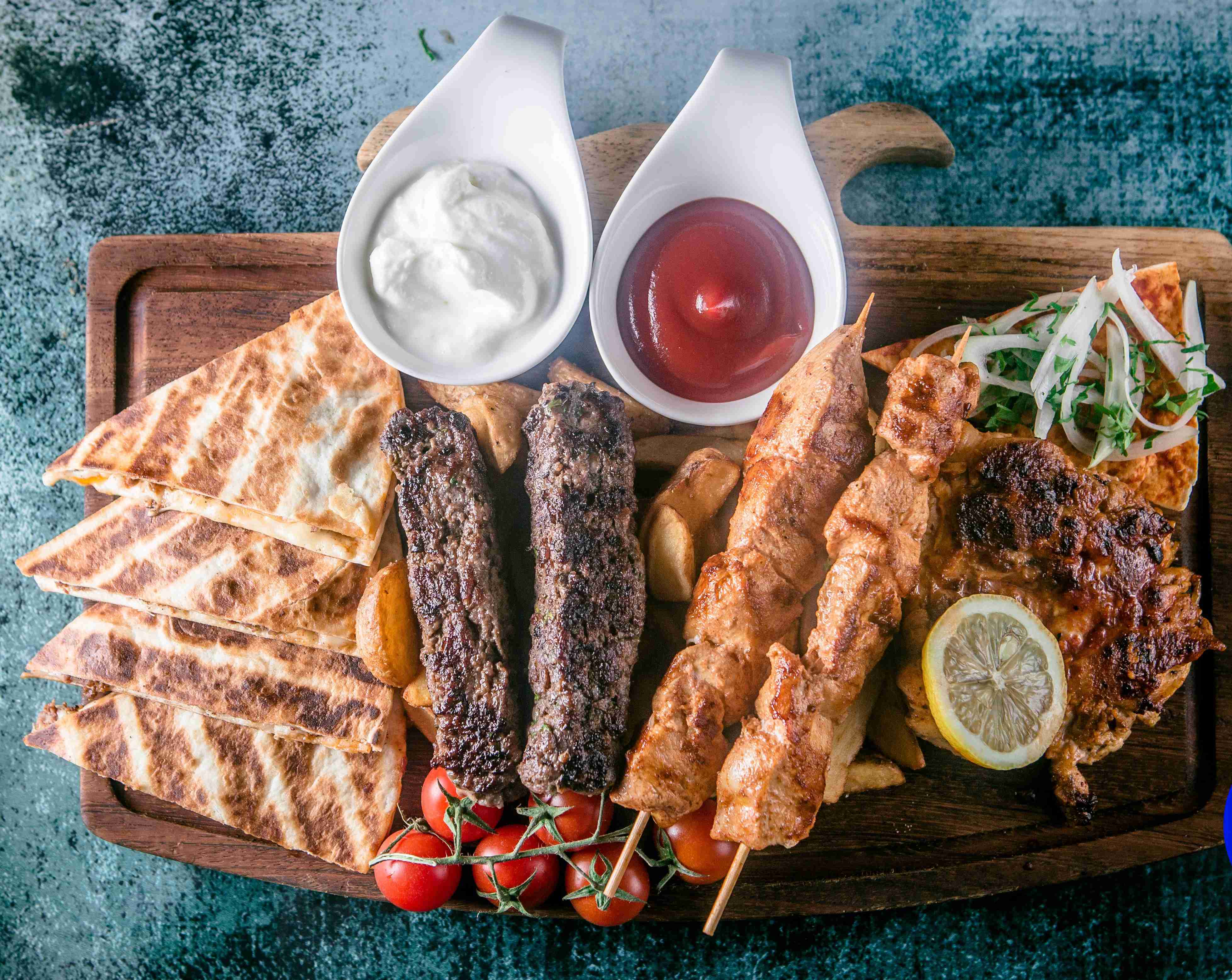 © Layali Lebanese Restaurant
© Layali Lebanese Restaurant
Bernard: In my home, we mostly eat meat. We don't actually eat so many vegetarian main courses. But, when I eat the vegetarian options from Layali, such as falafel, I really don't miss the meat. It really encourages you to eat less meat. I feel lighter - especially when I'm working - if I eat like this. It's perfect for a lunch in this hot, summer weather.
Zafer: If I'm not working, I love to walk. I love the city and I love the weather. I walked all over Zagreb. I don't have a map, I just walk. I love the old buildings and the nature. In Dubai, all the buildings are new. It looks artificial to me. When I'm tired, I stop in some cafe for a drink. Especially I love the rain. When it rains, I walk. If I eat somewhere else, I usually take pizza. It's something we don't make here.
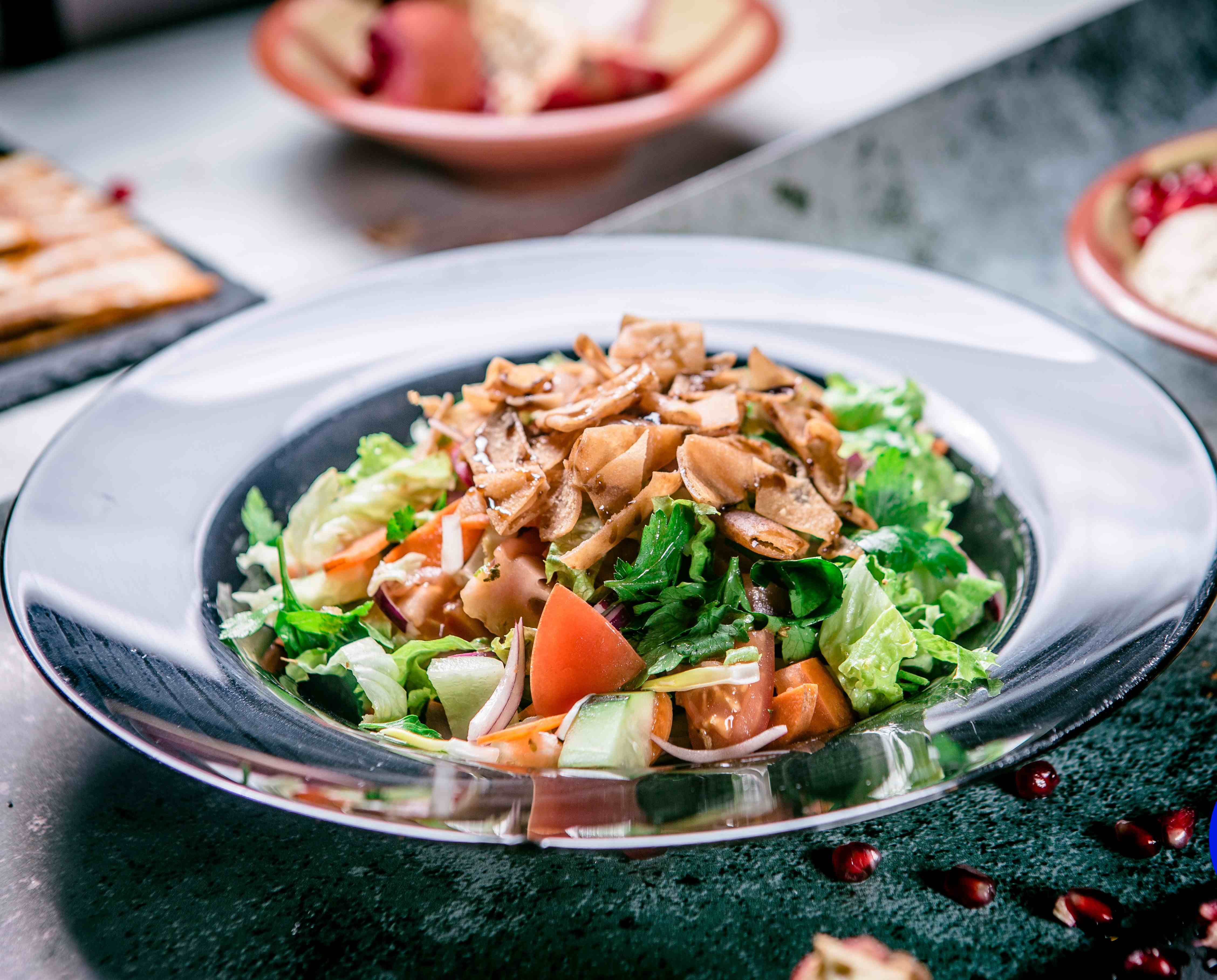 © Layali Lebanese Restaurant
© Layali Lebanese Restaurant
You can find Layali Lebanese Restaurant at Tkalčićeva 59
You can read the introduction to our series on Zagreb international cuisine and the first installment here
To follow our whole series on international cuisine and to follow the Croatian restaurant and gastro scene, keep an eye on our Gourmet pages here
Can Good Communication Save The Season? Boškinac on Pag Busier Than In 2019
July 13, 2020 - Marc Rowlands interviews Boris Šuljić, owner of Boškinac on Pag, a Michelin-starred restaurant, to try and discover the secret to success in the challenging summer of 2020
Among the neverending doom and gloom of this year, a ray of sunshine through the clouds. At Boškinac on Pag, the restaurant, hotel and winery, business is booming. With better numbers than at this point in 2019, is it possible the luxury sector is suffering less this season from COVID-19? And what is the secret to Boškinac's success so far in 2020?
“I am very satisfied with this year's business,” Boškinac owner Boris Šuljić told TCN with a smile and a carefree tone to his voice. “It's definitely busier than last year. Some days are better than others but, generally, more people are coming.”
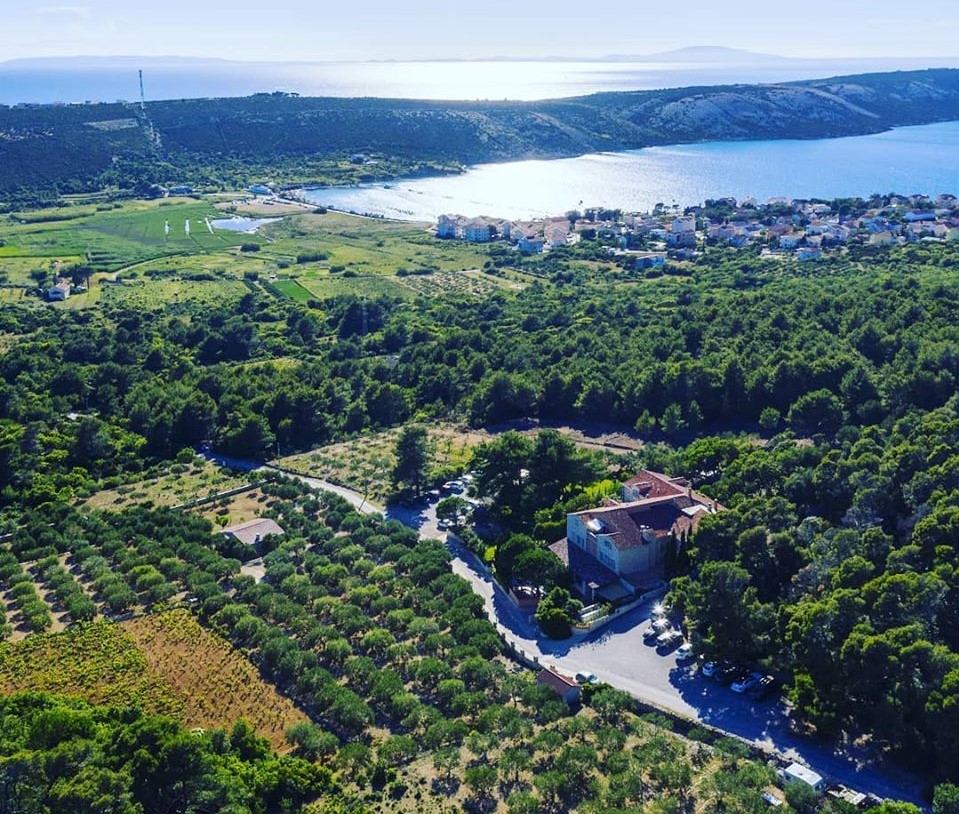
An island within an island. Pag's Boškinac is located within a lush green and neighbourless section of the island's interior © Boškinac
In a year where, depending on who you believe and how you extrapolate the info, tourism in Croatia is down by at least 50%, people sit comfortably isolated on Boškinac's large terrace. There, they take in the view of the olive trees and Boškinac's vineyards, with not a neighbour in sight. With special measures in place, seats in their Michelin-starred fine dining restaurant are similarly full. But just where are these guests coming from?
“Most of them this year have been from Croatia and Slovenia,” says Šuljić, not unsurprised. “I'd say the next largest group is foreign nationals, ex-pats, who now live in Croatia. But, also we've had quite a few from Germany, Austria, and Belgium. It's not so difficult for us to get busy. We are a relatively small hotel - 11 rooms, 55 seats in the fine dining restaurant, and 40 seats in our more informal tavern.”

Boris Šuljić welcoming guests to Boškinac with a glass of their own-made wine in summer 2019 © Fabio Šimićev
Šuljić estimates that in total around 60% of 2020's guests have come from Croatia, 40% from other countries, a distinct change in the usual demographic they receive. Awarded a Michelin star in February of 2020, the hotel and restaurant have earned a reputation internationally for high-quality food, wines, service, and an experience much more unhurried and relaxing than that found in many places on the popular island. So, has he dropped his prices to encourage this year's draw?
“No, not at all” Šuljić tells us, “our prices remained normal. We are not so expensive like some other 4 or 5-star hotels in Dubrovnik, Rovinj, or Split. The average room price is around €200. Until 15 July, we arranged some special packages with the room and fine dining. We kept the food at the same price but offered the rooms a little cheaper in combination. It was successful. It seemed to attract people who'd heard of the hotel and restaurant, who maybe decided that right now was the best time to come and look. It's not so far to come here to check us out when you only have to travel from Split or Istria, even Zagreb, which is where many of these guests have been coming from. They stayed for one or two nights and enjoyed our Michelin-starred restaurant.”

The flair with which Boškinac on Pag use their fresh, locally-sourced and premium ingredients earned them a Michelin star earlier in 2020 © Boškinac
Always keeping on top of developments in Croatia's gastro scene (you can stay updated on our Gourmet pages), one of TCN's most recent reports from Boškinac noted the venue's fluctuating success of the 2019 season. The summer's unusually variable weather was considered as perhaps one factor in the lack of footfall. With the sun shining reliably on Pag this summer, could it be that visitors care more about the weather than they do about Coronavirus? Is sun-seeking really a greater deciding factor for those looking at Croatia holidays than the ever-updating COVID-19 situation? Šuljić thinks not.
“I definitely think we're busier this year because of the Michelin star,” he says. “People seem to really recognise this international sign of quality. We got a lot of attention because of this. I think it is also because of our communication. We capitalised on the attention and we have been sending out very positive messages. We have every reason to be optimistic and it is this optimistic message we have been sending out; we are here, we are a small place, isolated, we have no neighbours, with allocations for relatively few people, but with lots of room and air and enough terrace for everyone. This is not the usual kind of busy hotel that's packed with people. We are very passionate about our food and our hotel experience. Ours is a business that concentrates on quality, not quantity.”

A platter of distinctly Dalmatian delights, an example of the food on offer at Boškinac on Pag's less-formal tavern restaurant © Boškinac on Pag
Though Šuljić's international recognition, unique premises and isolated location undoubtedly offer an advantage in attracting high-end clientele, could other Croatian businesses learn something from the clear and optimistic communication Boškinac has been sending out since the season's start? Well, it's an option to all but, since opening in 200, Boškinac's message and communications have been of premium importance to the business.
“We were very ambitious as soon as we opened, especially with our food,” remembers Šuljić. “But, at that time, this kind of fine dining experience was not so much recognised in Croatia. It was a very high cuisine for the time. People didn't understand what we were trying to do. Slowly we grew with our guests. It was a journey we made together. It was a gradual process. On our part, a mixture of good social media communication, some PR and word-of-mouth recommendations from previous guests was what worked best.”
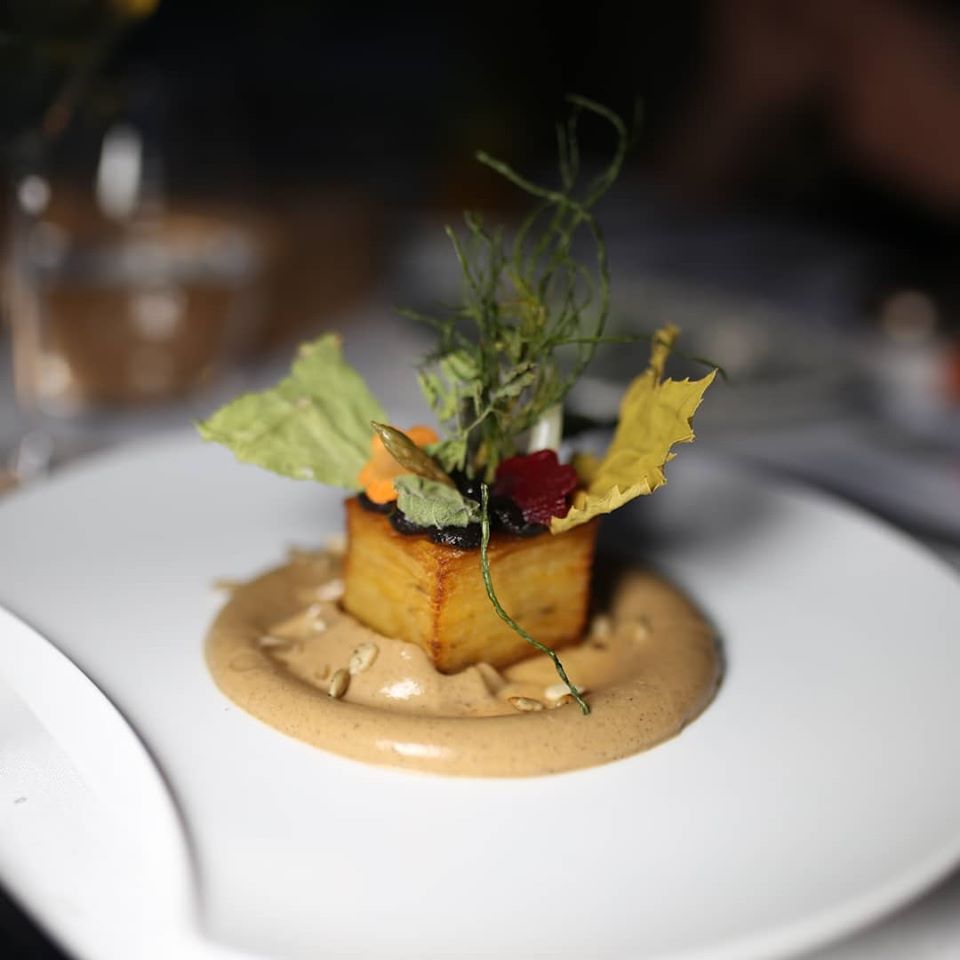
Spectacular presentation, one of the many wow factors attracting curious visitors to Boškinac on Pag © Boškinac on Pag
Of course, it's too early to tell if Boškinac will maintain its story of success through summer 2020. Šuljić is aware of this. And, even though it is even more difficult to predict the rest of the season than in any other year, he remains decidedly unworried because of their experiences so far.
“It is really interesting,” he says, when asked about future bookings for this summer, “I've never known anything like it. We have so far not had any bookings further than three or four weeks in advance. It's much more week to week. For instance, right now we have zero bookings for August. Usually, I would be concerned. But, it was the same one month ago and now we are almost full. All of the bookings are last minute. People are making their decisions based on the status and the quality of the information available. They check the news and the websites for advice, make a decision and then off they go.”
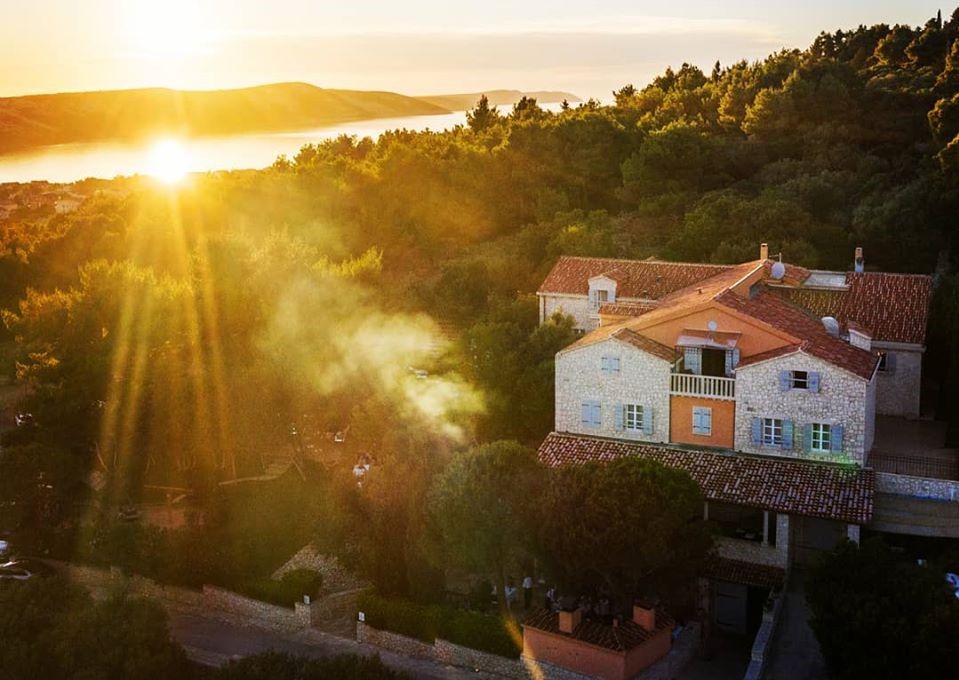
© Boškinac on Pag
For the best and most up-to-date information on Coronavirus and travel to Croatia, bookmark the Total Croatia News news page.
Total Croatia News is the best-read English language news site covering Croatia for people across south-east Europe. If you want to get your message across to those booking last-minute visits to the Croatia in summer 2020, contact us at This email address is being protected from spambots. You need JavaScript enabled to view it. to see what we can do for you.
International Cuisine in Zagreb: Falafel etc.
July 24, - Zagreb's food offer has grown considerably in quality and choice over the last decade, with Michelin stars galore and an exciting range of international cuisine options. We continue our look at some of the best new outlets offering meals never previously available in the Croatian capital, getting the story behind these businesses and their food. In this installment, we look at the fresh take on vegan-friendly falafel offered by Falafel etc.
If you're hungry or thirsty, you're not short of options on Kaptol, the city centre section of Zagreb's upper town. But, judging from the queues snaking down Opatovina, leading to the door of Falafel etc, something was clearly missing. Open for less than a year, the informal restaurant and takeaway has established itself as provider of the city's finest falafel, just as popular with health-conscious meat eaters as it is with their loyal vegan and vegetarian following. Deep-fried balls made from minced chickpeas, spices and herbs, this middle-eastern snack has long been one of the best lunchtime options available in neighbouring Belgrade. With the arrival of Falafel etc, Zagreb finally has an outlet easily as good as the best of what's on offer in the capital city next door. Antonija Kraljičković (right) and staff outside Falafel etc. © Total Croatia News
Antonija Kraljičković (right) and staff outside Falafel etc. © Total Croatia News
My name is Antonija Kraljičković and I'm from Lekenik, a small village near Sisak, roughly 30 kilometres from Zagreb. For the last 15 years I've been living in Zagreb. I went to university here and completed a degree in journalism. Towards the end of my studies, I started to have the feeling that journalism wasn't for me and my hobby was cooking. When I was younger, I'd always wanted to have some little restaurant, but back then it just seemed like a daydream. But, I was working in one job and I wasn't satisfied and I decided I really wanted to do something with cooking. So, now I'm here. We've been open for less than a year.
I wasn't so much inspired to learn cooking by a family member. I had to learn more out of necessity. I started living on my own when I was 18. It was only then that I realised that I love to cook. Once I'd made up my mind that I wanted to work doing cooking, I had to think of something to do. I've always loved falafel and I couldn't find anywhere in Zagreb that I thought made it as good as I'd tried elsewhere. Zagreb is full of pizzeria, burgers, grill places, so I thought that falafel would be a good idea. I think I made a good choice.
Sometimes falafel can be quite dry and quite hard in texture. I wanted to make authentic falafel, in its original flavour, but I didn't want to make it like that. I wanted it to be more appetizing. For almost a year I was doing taste testing and experimenting in my kitchen, trying different ingredients and additions, trying to get a consistency and texture that I was happy with. I narrowed it down to the top ten options, then I chose the best three – an original falafel, flavoured with coriander, one with beetroot and one with sweet potato. The next one I hope to introduce is a falafel filled with vegan cheese.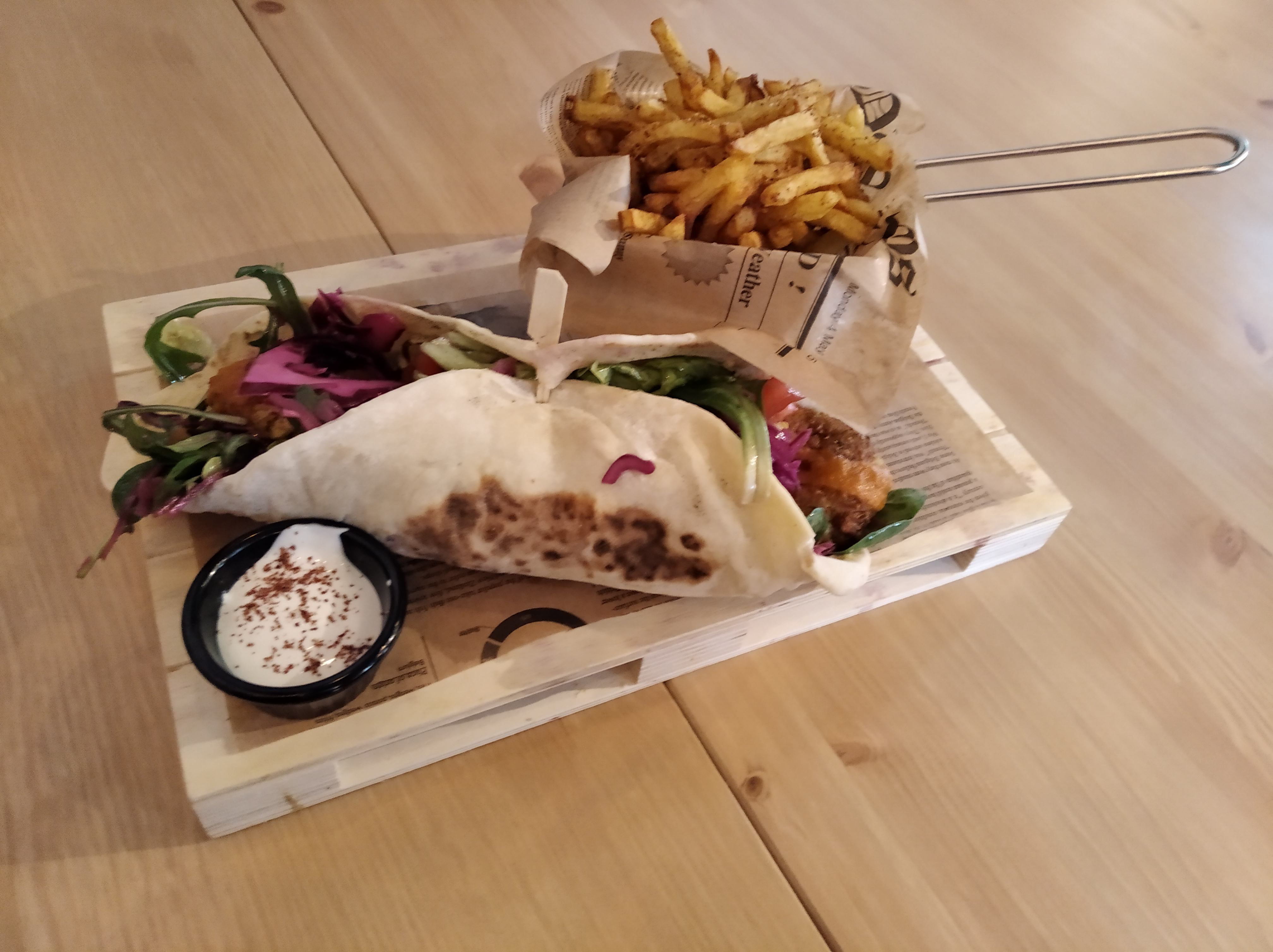 Falafel etc. © Total Croatia News
Falafel etc. © Total Croatia News
It's not been difficult to convince people to try our falafel, even though it's not been easily available before in Zagreb. We see the same people coming back here all the time, so I guess they like what we do. We have an area for sitting down and eating in the restaurant, but many more people come at lunchtime for takeaway and we use the delivery services too. Judging by their enthusiasm, I think people in Zagreb really like falafel and maybe they were waiting for a place like this to open. It's a healthy meal option and you really don't miss having any meat in this dish.
I think if I'd have opened this business ten years ago, maybe it would have been a lot more difficult to succeed. But, in recent years, Zagreb has welcomed more and more international visitors, tourists. Except for this year, of course! I think Zagreb's food offer has got bigger in order to satisfy such visitors. Maybe these visitors have also helped to change our perspective? I still think that we're missing out on some options. Some of the new places which open here, the prices can be quite high. These are restaurants you might go to once a week or for a special occasion, something fancy. Some people get their lunch from Falafel etc. every single day.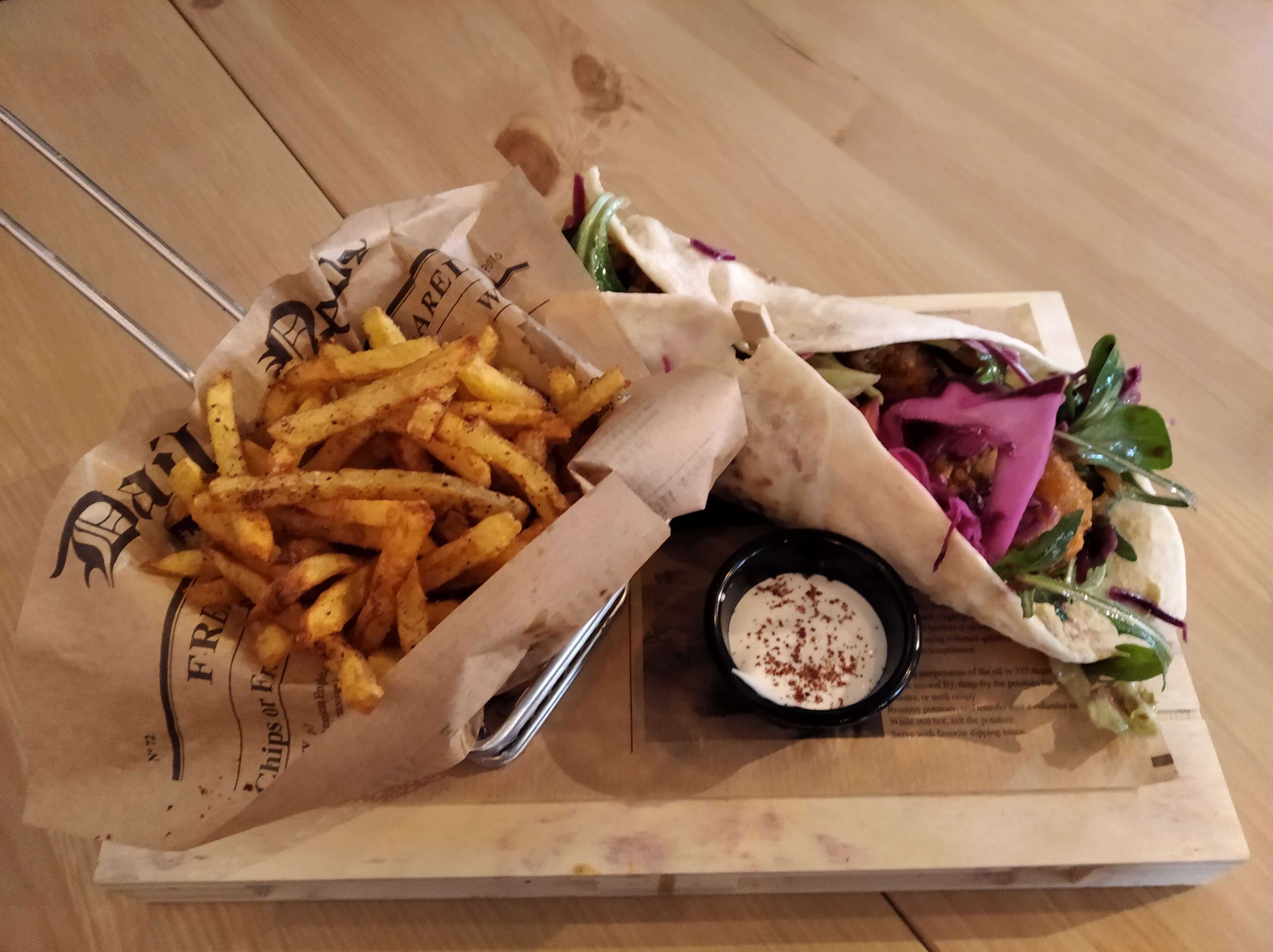 Falafel etc. © Total Croatia News
Falafel etc. © Total Croatia News
I get almost all of our ingredients and vegetables from local OPGs. I place an order with them and they bring it to Dolac with them in the morning and I collect it from there. It's just a couple of minutes walk from the restaurant. Every dish we make is vegan. I'm not vegan myself, although I do love vegetarian and vegan food. With falafel, it really wasn't difficult to offer a fully vegan menu instead of just a vegetarian choice. We buy dried chickpeas and soak them overnight in order to make the falafel and hummus the next day. We make all of our sauces and dressings ourselves. We also make our own bread. I hadn't planned to, but I tried every tortilla and flatbread available from the shops, bakeries and wholesalers and I wasn't satisfied at all. I didn't like the taste or the texture. So, I decided we had to do it by ourselves. For me, the bread is such an integral part of our falafel sandwiches. I had to get it right. For me, this dish is only truly complete when the bread is perfect.
I had been thinking about expanding the menu, with soups and something like vegan burritos. But, it has been a difficult period for such a young business, with Coronavirus. Luckily, the deliveries kept us in business and, even more lucky, we'd managed to get a really loyal customer base in just our first few months, people who wanted to order lunch from us several times a week. Thank you! That meant I was able to pay my costs and my staff. Now that the restrictions have been relaxed, they are ordering less, but they are instead coming themselves for takeaway. In the back of my mind, I wanted to maybe set up an outlet of the business somewhere on the coast, maybe on one island. But, many of these plans will have to wait for now. Maybe in a year or two. I first need to survive in Zagreb before I can think of opening on the coast.
NEW ADDRESS: Falafel etc. is now located at Andrije Žaje 60 10000 Zagreb.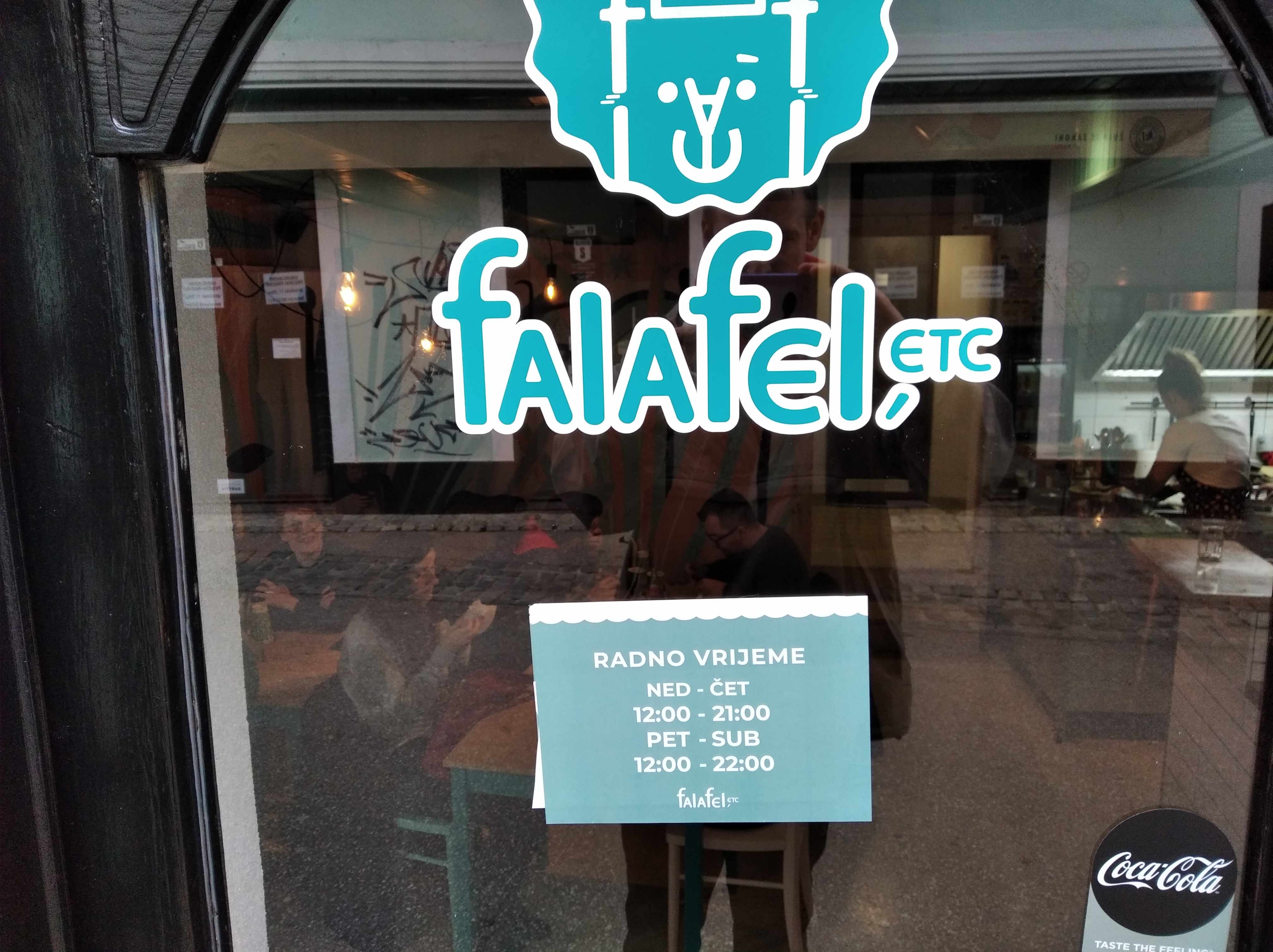
Falafel etc. © Total Croatia News
You can read the introduction to our series on Zagreb international cuisine and the first installment here
To follow our whole series on international cuisine and to follow the Croatian restaurant and gastro scene, keep an eye on our Gourmet pages here


